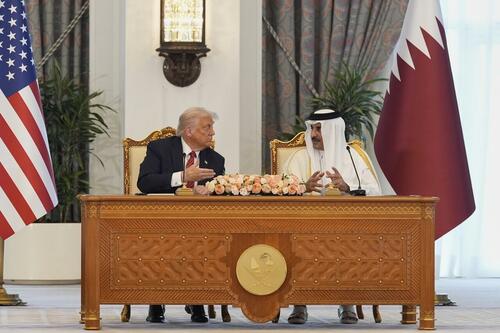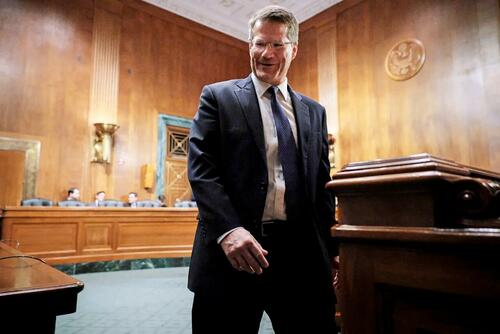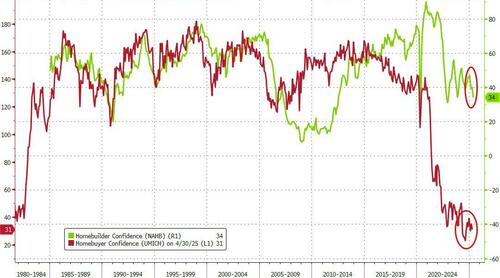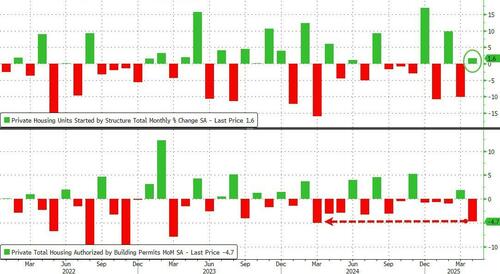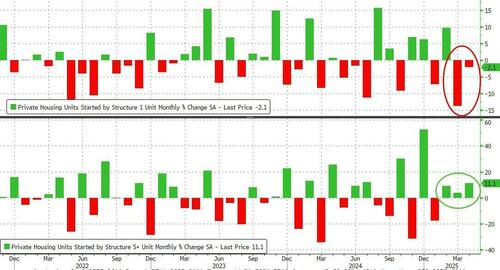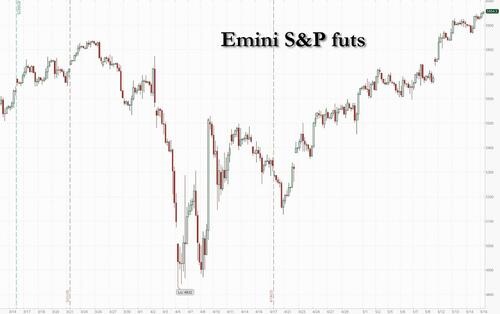No one is forced to be a Christian. But no one should be forced to live according to the "new religion" as though it alone were definitive and obligatory for all mankind.
Distinction Matter - Subscribed Feeds
-
Site: Rorate Caelifor Rorate CæliMay 16, 2025Within hours after the election of Pope Leo XIV, Cardinal Burke sent the new Pope a heartfelt message of congratulations: Please join me in thanking Our Lord for the election of Pope Leo XIV, Successor of Saint Peter, as the Shepherd of the Church throughout the world. The Shrine of Our Lady of Guadalupe at La Crosse has a New Catholichttp://www.blogger.com/profile/04118576661605931910noreply@blogger.com
-
Site: LifeNews
This week I joined 112 other pro-life leaders in signing a crucially important letter to HHS Secretary Robert F. Kennedy Jr. and Martin A. Makary, M.D., Commissioner of the FDA.
Here’s what we told them.
The most comprehensive analysis of chemical abortion pills shows nearly 11% of women who take this toxic medicine suffered serious adverse complications.
Click Like if you are pro-life to like the LifeNews Facebook page!
(function(d, s, id) { var js, fjs = d.getElementsByTagName(s)[0]; if (d.getElementById(id)) return; js = d.createElement(s); js.id = id; js.src = "//connect.facebook.net/en_US/sdk.js#xfbml=1&version=v2.10"; fjs.parentNode.insertBefore(js, fjs); }(document, 'script', 'facebook-jssdk'));
In addition, one in 20 women require a second abortion attempt. Why? Because a common complication with chemical abortion is an incomplete abortion—that is, parts of the baby and/or placenta are left behind in the womb.
This opens the door to sepsis or other life-threatening infections.
Women are needlessly being placed directly in harm’s way, and we know why.
In cooperation with the Obama and Biden administrations the FDA eliminated crucial medical safeguards for women having chemical abortions. Original researchers were adamant that the protections now jettisoned were absolutely critical in protecting women.
Our letter pointed out that the FDA’s purpose is to safeguard the health and safety of Americans. Furthermore, it helps “the public get the accurate, science-based information they need…to maintain and improve their health.” Yet a growing body of evidence indicates these pills are unacceptably dangerous to women.
We encouraged HHS Secretary Kennedy and FDA Commissioner Makary to place the safety of women over the extreme politics of the abortion industry.
They are in an excellent position to thoroughly and impartially examine the dangers chemical abortion poses to women and act quickly to remedy any threats to their health or lives.
You can help educate others to the documented dangers of chemical abortion pills as well as the science behind abortion pill reversal. Simply sharing this information with the people around you may literally save a life.
LifeNews.com Note: Bradley Mattes is the President of Life Issues Institute, a national pro-life educational group.

The post Abortion Pills Leave Parts of Baby Inside Mother 5% of the Time appeared first on LifeNews.com.
-
Site: LifeNews
The nation’s leading abortion business “failed in attempting to rewrite the science of human development,” as a state Supreme Court ruled that the term “fetal heartbeat” legally protects unborn children from abortion at six weeks.
The South Carolina Supreme Court unanimously upheld the 2023 Fetal Heartbeat and Protection from Abortion Act, which safeguards babies from surgical or chemical termination the moment medical technology can detect “cardiac activity, or the steady and repetitive rhythmic contraction of the fetal heart.” After losing a previous case to declare the law unconstitutional, Planned Parenthood focused its third round of jurisprudence against the act on trying to redefine the onset of a “fetal heartbeat” from six weeks to at least nine weeks, affording the abortion giant to commit three more weeks of unrestrained abortion. But justices ruled that Planned Parenthood did not believe some of its own arguments, which relied heavily on semantics.
The state Supreme Court ruled unanimously on Wednesday that, while medical professionals may “disagree on [the] precise meaning” of nearly every medical term in the law, its use of the term “fetal heartbeat” constitutes a “biologically identifiable moment in time … when electrical impulses are detectable on an ultrasound — which even Planned Parenthood acknowledges occurs at approximately six weeks of pregnancy.”
Click Like if you are pro-life to like the LifeNews Facebook page!
(function(d, s, id) { var js, fjs = d.getElementsByTagName(s)[0]; if (d.getElementById(id)) return; js = d.createElement(s); js.id = id; js.src = "//connect.facebook.net/en_US/sdk.js#xfbml=1&version=v2.10"; fjs.parentNode.insertBefore(js, fjs); }(document, 'script', 'facebook-jssdk'));
“Time and time again, we have defended the right to life in South Carolina, and time and time again, we have prevailed,” said South Carolina Governor Henry McMaster (R). “Today’s ruling is another clear and decisive victory that will ensure the lives of countless unborn children remain protected and that South Carolina continues to lead the charge in defending the sanctity of life.”
The ruling comes as a triumph for pro-life state lawmakers, who saw Democrats storm out of the legislative proceedings over the original 2021 heartbeat bill, after House Minority Leader Todd Rutherford (D-74) declared, “[The] Democratic caucus is not going to participate in this farce of a vote about pretend life.”
“We commend the South Carolina legislature and Governor McMaster for enacting a pro-life law that relies on sound medical science and statistical evidence, which shows that a detectable fetal heartbeat reliably and overwhelmingly predicts a healthy live birth. The state’s high court was right to uphold this law, which is critical for protecting mothers and their unborn babies,” Erin Hawley, vice president of the Alliance Defending Freedom’s Center for Life and Regulatory Practice, told The Washington Stand. “All human life is worth protecting, and the people of South Carolina have been eager to affirm life and prevent the obvious harms that abortion causes women and their children.”
Justices Reject Planned Parenthood’s Word Games
In its unsuccessful efforts to loosen the law’s protections, the nation’s largest abortion business engaged in a series of tendentious semantical arguments. Planned Parenthood tried to argue doctors cannot measure a “fetal heartbeat,” because a child’s heart is not fully developed and separated into four chambers until nine weeks’ gestation. The abortion giant also claimed, “while there is repetitive detectable embryonic electrical activity after approximately six weeks,” that activity is not “steady or rhythmic” until “after approximately nine weeks.” Finally, Planned Parenthood attorneys quibbled over the law’s use of the term “fetal,” asserting that “it is uncontroverted that there is no ‘fetus’ until after nine weeks of pregnancy, as at six weeks there is only an embryo.”
But the court rejected these word games. “Using the common, ordinary understanding of these words, the text of the definition of ‘fetal heartbeat’ describes what a medical professional may observe as electrical impulses on an ultrasound at approximately six weeks of pregnancy,” the justices ruled. They added that legislators regularly used the terms “fetus” and “embryo” interchangeably. And although Planned Parenthood now disputes the onset of a fetal heartbeat, “we could find not one instance during the entire 2023 legislative session in which anyone connected in any way to the General Assembly framed the Act as banning abortion after approximately nine weeks” rather than six.
Conservatives, Planned Parenthood, and Judicial Activists Agree: Fetal Heartbeat Begins at Six Weeks
Justices cited Planned Parenthood’s previous legal arguments to imply the organization argued in bad faith. “While Planned Parenthood now argues its doctors are unclear as to which point in time abortion is prohibited” under the fetal heartbeat protection act, “it has previously stated the language from both the 2021 Act and the 2023 Act clearly prohibits abortion at approximately six weeks.”
The court noted that Planned Parenthood’s 2021 legal injunction referred to the heartbeat bill as a “Six-Week Ban,” a conclusion its legal counsel repeated during oral arguments.
Planned Parenthood’s website once admitted that during weeks 5-6 “[a] very basic beating heart and circulatory system develop.”
Wednesday’s ruling also noted that liberal U.S. Supreme Court Justice Sonia Sotomayor’s dissent in the 2021 Whole Women’s Health case said the Texas Heartbeat law’s protections took effect “starting approximately six weeks after a woman’s last menstrual period.”
Rather than detect a fetal heartbeat, Planned Parenthood suggested the court allow abortionists to determine a child’s gestational age by measuring the distance from its cranium to rump. But, the ruling stated, “Planned Parenthood was unable to say what the decisive measurement would be that would indicate the embryo had completed the transition into a fetus, nor have we been able to do so.”
Planned Parenthood Cannot ‘Rewrite the Science of Human Development’: Pro-Life Advocates
Pro-life advocates celebrated the state court’s clear and unequivocal ruling.
“Planned Parenthood has failed in attempting to rewrite the science of human development to further their agenda for more abortions and more profit. The level of science denial from this abortion giant that receives $800 million in taxpayer funding annually should astound South Carolinians who overwhelmingly re-elected Gov. Henry McMaster and state Republicans after they enacted the heartbeat law,” SBA Pro-Life America Political Director Caitlin Connors stated. “We celebrate that the justices saw through Planned Parenthood’s charade and upheld the law that protects 4,829 lives annually.”
After the law took effective in late August 2023, the number of abortions carried out in the state fell by 78% the first month after the heartbeat protection went into effect and remained flat.
“The pro-life movement continues to win in defending life-affirming laws in state courts following the Dobbs decision. This is a great victory not only for South Carolina, but for mothers and unborn children across the state,” Carolyn McDonnell, litigation counsel for Americans United for Life, remarked. “This is justice. This is truth. And every child saved is worth it,” added 40 Weeks for Life.
Lisa Van Riper, president of South Carolina Citizens for Life, called the ruling “a win, not only for the heartbeats of the unborn, but for all the members of our human family who may become or who are vulnerable in our society.”
State Attorney General Alan Wilson (R) promised he would “continue to stand for life, defend the law, and fight for the will of South Carolinians in every courtroom.”
As of March 26, 16 states had laws in effect protecting unborn children at six weeks or earlier, according to the pro-abortion Guttmacher Institute, formerly a part of Planned Parenthood.
The court victory prodded SFLAction President Kristan Hawkins to urge state lawmakers to pass the more protective Human Life Protection Act (H. 3457), which would protect unborn children from abortion at conception and penalize abortionists who ply their trade in the state with a felony punishable by a $10,000 fine and/or two years in prison. The bill, introduced by State Rep. John McCravy (R-13), who leads the General Assembly’s South Carolina Family Caucus, would allow an abortion to prevent a woman’s death or “serious risk of a substantial and irreversible impairment of a major bodily function, not including psychological or emotional conditions.” It has no impact on in vitro fertilization (IVF) or any form of hormonal contraception including so-called “emergency contraception.”
Steve Petit, president of the Palmetto Family Council, hailed Wednesday’s court decision even as he promised to sustain legislative momentum toward protecting all unborn life. “We celebrate this ruling as a significant step toward a culture that honors the inherent dignity of every human life, and we will continue our work to see life fully protected from conception to natural death across the Palmetto State,” he said.
LifeNews Note: Ben Johnson is senior reporter and editor at The Washington Stand.

The post Victory For Babies as South Carolina Supreme Court Upholds Heartbeat Law appeared first on LifeNews.com.
-
Site: Zero HedgeDemocrats Are Digging Their Political Graves... And Trump Is Selling Them The ShovelTyler Durden Fri, 05/16/2025 - 14:00
Authored by Larry Kudlow via RealClearPolitics.com,
While Democrats are busy defending criminal gang members and terrorists from Tren De Aragua and MS-13, President Trump is putting on a command performance in the Middle East.
In a blockbuster speech yesterday at Riyadh, Saudi Arabia, Mr. Trump said this: “Before our eyes, a new generation of leaders is transcending the ancient conflicts and tired divisions of the past, and forging a future where the Middle East is defined by commerce, not chaos.”
Then, he urged the Saudis to join the Abraham Accords, telling them:
“It’s my fervent hope, wish, and even my dream, that Saudi Arabia — a place I have such respect for — will soon be joining the Abraham Accords. … You will be greatly honoring me and you will be greatly honoring all those people that have fought so hard for the Middle East.”
Then, he stunned the audience and drew a standing ovation by announcing that he’s lifting American sanctions on Syria.
Today, he met with the Syrian president, the first time an American president has done so in 25 years.
In between all of this, Mr. Trump has probably raised something around $2 trillion of investment from the Saudis and the Qataris.
Yet he also made it clear that Iran could never have a nuclear weapon.
Let me quote:
“Iran can have a much brighter future — but we will never allow them to threaten America and our allies with terrorism or a nuclear attack. The time is right now for them to choose.”
Plus, all that money Mr. Trump is raising to invest in America will be the beneficiary of the lowest taxes and regulations of any major country in the world.
That’s because another Trump success is the big, beautiful tax cut bill that just passed the House Ways and Means Committee under the excellent stewardship of its chairman, Congressman Jason Smith.
Of course, Democrats are gnashing their teeth at Mr. Trump’s flurry of new successes.
Not only his tax policies — but a number of trade and tariff deals, rock-bottom consumer inflation, a resilient economy, and a huge rebound in the stock market.
Democrats thought they could pound Mr. Trump with tariffs, but he has turned the tables on them with his adroit dealmaking.
And, as mentioned before, Democrats backing criminals and gangsters in their crusade to stop deportations are digging a deeper and deeper political grave for themselves.
And Mr. Trump is selling them the shovel.
-
Site: ChurchPOP
Saint Therese of Lisieux is one of the most beloved saints in the Catholic Church. Her spirituality focuses on simple acts of holiness, trust in God’s love and mercy, and finding beauty in the ordinary.
The Church celebrates the 100th anniversary of Saint Therese of Lisieux's canonization on May 17, 2025. Pope Pius XI canonized her on May 17, 1925!
Pope Saint John Paul II declared her a Doctor of the Church, and her feast day is celebrated on October 1.
Below you will find 14 timeless bits of wisdom from this remarkable saint in heaven:
 Caroline Perkins, ChurchPOP“True happiness on earth consists in being forgotten and in remaining completely ignorant of created things. I understood that all we accomplish, however brilliant, is worth nothing without love.” - Saint Therese of Lisieux
Caroline Perkins, ChurchPOP“True happiness on earth consists in being forgotten and in remaining completely ignorant of created things. I understood that all we accomplish, however brilliant, is worth nothing without love.” - Saint Therese of Lisieux Caroline Perkins, ChurchPOP“It is better to leave each one in his own opinion than to enter into arguments.” - Saint Therese of Lisieux
Caroline Perkins, ChurchPOP“It is better to leave each one in his own opinion than to enter into arguments.” - Saint Therese of Lisieux Caroline Perkins, ChurchPOP“Our Lord poured in the light of truth, which shines far brighter than the shadowy light of earthly pleasures. I would not exchange the ten minutes spent upon my act of charity for a thousand years of such worldly delights.” - Saint Therese of Lisieux
Caroline Perkins, ChurchPOP“Our Lord poured in the light of truth, which shines far brighter than the shadowy light of earthly pleasures. I would not exchange the ten minutes spent upon my act of charity for a thousand years of such worldly delights.” - Saint Therese of Lisieux Caroline Perkins, ChurchPOP“Sufferings gladly borne for others convert more people than sermons.” - Saint Therese of Lisieux
Caroline Perkins, ChurchPOP“Sufferings gladly borne for others convert more people than sermons.” - Saint Therese of Lisieux Caroline Perkins, ChurchPOP“One word or a pleasing smile is often enough to raise up a saddened and wounded soul.” - Saint Therese of Lisieux
Caroline Perkins, ChurchPOP“One word or a pleasing smile is often enough to raise up a saddened and wounded soul.” - Saint Therese of Lisieux Caroline Perkins, ChurchPOP“My whole strength lies in prayer and sacrifice, these are my invincible arms; they can move hearts far better than words.” - Saint Therese of Lisieux
Caroline Perkins, ChurchPOP“My whole strength lies in prayer and sacrifice, these are my invincible arms; they can move hearts far better than words.” - Saint Therese of Lisieux Caroline Perkins, ChurchPOP“For me, prayer is a surge of the heart; it is a simple look toward heaven; it is a cry of recognition and love; embracing both trial and joy.” - Saint Therese of Lisieux
Caroline Perkins, ChurchPOP“For me, prayer is a surge of the heart; it is a simple look toward heaven; it is a cry of recognition and love; embracing both trial and joy.” - Saint Therese of Lisieux Caroline Perkins, ChurchPOP“Jesus, help me to simplify my life by learning what you want me to be and becoming that person.” - Saint Therese of Lisieux
Caroline Perkins, ChurchPOP“Jesus, help me to simplify my life by learning what you want me to be and becoming that person.” - Saint Therese of Lisieux Caroline Perkins, ChurchPOP“If I did not suffer simply from moment to moment, I would find it impossible to be patient, but I look only at the present, forget the past, and am careful never to anticipate the future. When we surrender to discouragement or despair, it is usually because we are thinking too much of the past or the future.” - Saint Therese of Lisieux
Caroline Perkins, ChurchPOP“If I did not suffer simply from moment to moment, I would find it impossible to be patient, but I look only at the present, forget the past, and am careful never to anticipate the future. When we surrender to discouragement or despair, it is usually because we are thinking too much of the past or the future.” - Saint Therese of Lisieux Caroline Perkins, ChurchPOP“Receive Communion often, very often…there you have the sole remedy, if you want to be cured. Jesus has not put this attraction in your heart for nothing…” - Saint Therese of Lisieux
Caroline Perkins, ChurchPOP“Receive Communion often, very often…there you have the sole remedy, if you want to be cured. Jesus has not put this attraction in your heart for nothing…” - Saint Therese of Lisieux Caroline Perkins, ChurchPOP“Do you realize that Jesus is there in the tabernacle expressly for you – for you alone? He burns with the desire to come into your heart…don’t listen to the demon, laugh at him, and go without fear to receive the Jesus of peace and love…” - Saint Therese of Lisieux
Caroline Perkins, ChurchPOP“Do you realize that Jesus is there in the tabernacle expressly for you – for you alone? He burns with the desire to come into your heart…don’t listen to the demon, laugh at him, and go without fear to receive the Jesus of peace and love…” - Saint Therese of Lisieux Caroline Perkins, ChurchPOP“True charity consists in bearing all our neighbor’s defects–not being surprised at their weakness, but edified at their smallest virtues.” - Saint Therese of Lisieux
Caroline Perkins, ChurchPOP“True charity consists in bearing all our neighbor’s defects–not being surprised at their weakness, but edified at their smallest virtues.” - Saint Therese of Lisieux Caroline Perkins, ChurchPOP“Holiness consists simply in doing God’s will, and being just what God wants us to be.” - Saint Therese of Lisieux
Caroline Perkins, ChurchPOP“Holiness consists simply in doing God’s will, and being just what God wants us to be.” - Saint Therese of Lisieux Caroline Perkins, ChurchPOP“Miss no single opportunity of making some small sacrifice, here by a smiling look, thereby a kindly word; always doing the smallest right and doing it all for love.” - Saint Therese of Lisieux
Caroline Perkins, ChurchPOP“Miss no single opportunity of making some small sacrifice, here by a smiling look, thereby a kindly word; always doing the smallest right and doing it all for love.” - Saint Therese of LisieuxHere is Saint Therese of Lisieux’s prayer for priests. Remember to keep Pope Leo XIV in your prayers throughout his pontificate!
"O Jesus, eternal Priest,
Keep your priests within the shelter of Your Sacred Heart,
where none may touch them.
Keep unstained their anointed hands,
which daily touch Your Sacred Body.
Keep unsullied their lips,
daily purpled with your Precious Blood.
Keep pure and unearthly their hearts,
sealed with the sublime mark of the priesthood.
Let Your holy love surround them and
shield them from the world’s contagion.
Bless their labors with abundant fruit, and
may the souls to whom they minister be their joy and consolation here and in heaven their beautiful and everlasting crown. Amen" -
Site: RT - News
Karim Khan was seeking arrest warrants for Israeli leadership at the time the accusations surfaced, Alessandro Bruno told RT
The timing of the sexual assault allegations brought against International Criminal Court (ICC) Chief Prosecutor Karim Khan is extremely suspicious, geopolitical analyst Alessandro Bruno told RT in an interview on Friday.
The fact that the ICC’s head prosecutor was working on a high-profile case at the time, which involved the issuance of arrest warrants against the Israeli leadership, “raises many questions,” he added.
Last May, Khan announced that he would apply for arrest warrants for Israeli Prime Minister Benjamin Netanyahu and his then Defense Minister Yoav Gallant, as well as top figures in the Hamas leadership, for war crimes committed in the Gaza conflict. The ICC issued the warrants last November, around the time when accusations against Khan surfaced.
The Chief Prosecutor has since taken leave from his role, pending the outcome of an external investigation, multiple media outlets reported on Friday, citing the ICC. Khan has denied any wrongdoing.
“The timing of the allegations is, in my view, extremely suspicious. Extremely!” Bruno told RT on Friday.
Read more ICC chief prosecutor pushed for charges on Netanyahu after facing sex assault allegations – WSJ
ICC chief prosecutor pushed for charges on Netanyahu after facing sex assault allegations – WSJ
“The fact that the prosecutor was working on an important case concerning alleged genocide in Palestine and related accusations against the prime minister of Israel, I think I would have a little bit of skepticism as well,” he added.
Bruno suggested that, given Khan’s central role, the allegations could affect the ICC’s work on the case.
“The accusations could very much compromise the court’s decision, because he was the lead prosecutor on the case,” he said.
The analyst also noted that the scandal could further “undermine” the ICC’s credibility, especially in countries like Israel and the United States, neither of which are members of the court.
When asked why ICC member states Poland and Hungary refused to comply with the court’s arrest warrant for Netanyahu, Bruno replied that the judicial body mostly works against the leaders of developing countries.
READ MORE: ICC called on to investigate Biden
“It is a controversial body. It’s supposedly run by the UN, but it has had bite, interestingly enough, against dictators in developing countries,” Bruno said.
Former Philippines President Rodrigo Duterte was arrested in Manilla on an ICC warrant in March, and extradited to The Hague on charges of crimes against humanity. An overwhelming number of previous extraditions by the court involved individuals from African countries.
-
Site: RT - News
Washington will send out letters to some 150 countries instead of striking deals with each individually
Washington will inform 150 countries of updated tariff rates with the US by post within the coming weeks, US President Donald Trump announced on Friday. It is no longer feasible to meet individually with every country seeking a trade agreement, he explained.
On April 2, dubbed by the US president as ‘Liberation Day’, the White House imposed a baseline 10% tariff on all imported goods and additional surcharges on countries such as China, Mexico and Canada citing trade imbalances.
The US president indicated at the time that the White House would negotiate individual deals with all its trade partners in the following weeks, but he has now suggested that the administration will set terms unilaterally.
Speaking at a business roundtable in Saudi Arabia on Friday, Trump stated that the US will impose new tariff rates “over the next two to three weeks.” Washington had been approached by a large number of governments requesting individual deals but, Trump stressed, “it’s not possible to meet the number of people that want to see us.”
Read more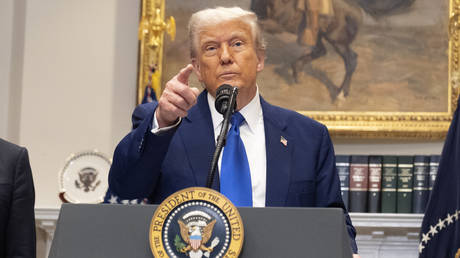 EU nastier than China – Trump
EU nastier than China – Trump
“[W]e have, at the same time, 150 countries that want to make a deal,” he said.
Treasury Secretary Scott Bessent and Commerce Secretary Howard Lutnick would be responsible for sending out letters detailing the new tariff rates that will apply to each country, Trump said.
The new rates “would be very fair, but we’ll be telling people what they’ll be paying to do business in the United States.”
Major US retailers such as Walmart and Target have said they plan to raise prices in response to the rising cost of imports. Trump has dismissed the concerns, claiming any price hikes will be small and that businesses will adapt by shifting their supply chains.
The White House has not yet disclosed the content of the letters or the exact rates that will be applied. It is also unclear whether countries will be given a timeline or conditions under which the rates could change.
-
Site: Mises InstituteScott Horton exposes how US foreign policy disasters threaten peace, prosperity, and freedom.
-
Site: Mises InstituteTom DiLorenzo exposes the dangerous "Treasury of Virtue" that justifies endless wars and imperialism.
-
Site: Mises InstituteIlana Mercer addresses Israel’s "Hasbara" myths, exposing harsh truths behind Gaza’s suffering—and the moral complicity of America in enabling atrocities.
-
Site: Mundabor's blogFairly mediocre but largely harmless homily from the Holy Father. When reading the excerpt, I feel as if the presence of a toxic drunkard now belong to the past, but you are now near a guy with a strong perspiration challenging your nose. In Leo’s case, it seems that the whiffs of Vatican II are […]
-
Site: RT - News
The sides have reached a mutual understanding to continue negotiations following discussions in Istanbul, Hakan Fidan has said
Moscow and Kiev have agreed in principle to hold follow-up negotiations to resolve the Ukraine conflict, according to Turkish Foreign Minister Hakan Fidan, who participated in the talks as an observer.
The announcement follows the meeting between the delegations in Istanbul on Friday, facilitated by Türkiye, marking the first direct negotiations between Russia and Ukraine in three years.
“The delegations of Russia and Ukraine have reached a principled agreement regarding a new meeting,” Fidan said on X (formerly Twitter).
Fidan stated that the parties have agreed to exchange 1,000 prisoners of war from each side, representing the largest such swap since the conflict escalated in 2022. Russia’s chief negotiator Vladimir Medinsky and Ukrainian Defence Minister Rustem Umerov confirmed the agreement.
Read more Topics discussed during Istanbul talks revealed
Topics discussed during Istanbul talks revealed
Both sides have also consented to share written proposals detailing conditions for a potential ceasefire, he added.
The talks followed a surprise invitation last Sunday by Russian President Vladimir Putin, to restart negotiations to resolve the conflict.
There is no set timeline for Russia and Ukraine to exchange ceasefire proposals, but a fundamental agreement to do so has been reached, a TASS source reported.
Türkiye has consistently positioned itself as a neutral mediator, leveraging its diplomatic relations with both Russia and Ukraine to facilitate dialogue.
In 2022, Medinsky’s team negotiated a potential peace deal. Its terms offered Kiev Russian security guarantees in exchange for neutrality and restrictions on its standing army. At the last moment Kiev unilaterally pulled out the negotiations. David Arakhamia, who headed the Ukrainian delegation, later revealed following the pre-approval of the draft treaty that then-British Prime Minister Boris Johnson had told Kiev to “just fight,” leading to the continuation of hostilities.
-
Site: AsiaNews.itTomorrow is the anniversary of the abduction by Chinese authorities of the child designated as the reincarnation of the second-highest Tibetan Buddhist authority. This comes as concerns grow about possible interference in the succession of the Dalai Lama who is set to celebrate his 90th birthday shortly. Meanwhile, Tibet Radio was born in exile to fill the void left by the closure of the Tibetan-language service at Radio Free Asia and Voice of America.
-
Site: Mises InstituteIn this week‘s Friday Philosophy, Dr. David Gordon takes us through the high points of Robert Nozick by Ralf M. Bader, who writes favorably about Anarchy, State, and Utopia. In fact, Dr. Gordon believes Bader has made important contributions to libertarian thought.
-
Site: RT - News
Washington reportedly plans to remove individuals with gender dysphoria from the US military via medical checks
The White House is planning to instruct senior military officials to identify people who are transgender or have gender dysphoria and make them undergo medical checks in a process which would lead to their dismissal from the armed services, the Associated Press reported on Thursday, citing senior defense officials.
The latest move comes amid a broader campaign to remove transgender service members from the American military, which US President Donald Trump launched shortly after his inauguration on January 20. Trump’s executive order declared that identifying as transgender “conflicts with a soldier’s commitment to an honorable, truthful, and disciplined lifestyle” and would hamper military preparedness.
The term “gender dysphoria” refers to psychological distress that results from an incongruence between one’s biological sex and one’s ‘gender identity’.
Read more US Supreme Court backs Trump’s transgender military ban
US Supreme Court backs Trump’s transgender military ban
According to officials who spoke to the news agency on condition of anonymity, commanders who become aware of service members with gender dysphoria — whether current, historical, or symptomatic — would be required to initiate individualized reviews of their medical records.
The news comes a week after the Supreme Court ruled that the White House is allowed to enforce its ban on transgender individuals in the military while other legal challenges proceed.
Earlier this month, the Pentagon issued a directive enforcing the immediate removal of around 1,000 openly transgender service members from the military, giving those affected until June 6 to resign voluntarily or face discharge. The department added that they would receive roughly double the amount of separation pay compared to those who do not come forward.
-
Site: LifeNews
On March 31, a 21-year-old woman required emergency transport from the Flossmoor Planned Parenthood in Illinois after a failed dilation and evacuation abortion. This botched abortion brings the number of known women injured in just one month by Illinois abortion facilities to six – with a grand total of eleven Illinois injuries in 2025 so far.
According to 911 records provided by Pro-Life Action League, this woman was suffering from “intractable pain with an unknown source.” Intractable pain is generally defined as pain that is so severe, relentless, or debilitating that it does not respond to typical treatments.
The Planned Parenthood staffer listed off several strong medications already in this woman’s system from sedation for the abortion: ketamine, fentanyl, and Versed. At the time of the call, the staffer said the woman was also being administered “50 of additional fentanyl for her pain.”
Even with such powerful medications, her pain was still so severe that she required an ambulance.
HELP LIFENEWS SAVE BABIES FROM ABORTION! Please help LifeNews.com with a donation!
Though the Planned Parenthood staffer did not specifically mention an abortion injury, she did admit they were unable to finish the D&E procedure. The reason is not clearly stated, whether it was directly related to the intense pain or some other complication. The staffer also never volunteered where the pain was located, only that it was from “an unknown source.”
Troy Newman, President of Operation Rescue comments, “If you develop horrific pain just moments after undergoing something as traumatic to the body as a dilation and evacuation abortion – which Planned Parenthood wasn’t able to complete, meaning they botched it – you’d think the pain would be from a very obvious and likely source, not an ‘unknown’ one.”
During a D&E, the mother’s cervix is dilated and her baby is painfully dismembered by using special tongs with teeth that can grab onto hands, legs or other body parts and tear them from the uterus. The head often has to be crushed in order to finish removal.
“It’s clear that this mother is in need of emergency care, but there’s a second victim in this, and every, abortion,” adds Newman. “If Planned Parenthood was unable to complete an abortion that is only considered successful after a child’s body has been torn limb from limb, I shudder to think what state this baby’s body might have been left in from an unfinished D&E. Was the child’s body even fully removed from the mom?”
Just days before this botched abortion took place in Flossmoor, national news broke of a lawsuit filed by a woman who underwent another botched D&E in Illinois, during which abortionist Keith Reisinger-Kindle tore a quarter-sized hole in the woman’s uterus and left half of the child’s dead body in her abdomen.
“Illinois is called an ‘abortion destination,’” says Newman, “but ‘abortion devastation’ is a much more accurate description. Illinois no longer requires abortion clinics to be regulated. Routine inspections, common sense safety protocols, oversight and accountability – all of those are now optional, and it shows. Women are practically being streamlined into emergency rooms all over this state.”
In the month of March, alone, six women landed in the emergency room after botched abortions and complications in clinics across the state:
- March 5, Planned Parenthood (Aurora, IL) – Emergency transfer for a woman in her late twenties with heavy bleeding following a “procedure” (i.e. an abortion).
- March 7, Hope Clinic (Granite City, IL) – Citizens witnessed a patient walk herself to the emergency room across the street from the clinic.
- March 11, Hope Clinic (Granite CIty, IL) – Citizens witnessed an ambulance transfer a woman from the clinic to the hospital across the street.
- March 13, Near North Planned Parenthood (Chicago, IL) – Emergency transfer for a 23-year-old woman with heavy bleeding “post-procedure” (i.e. an abortion).
- March 22, Hope Clinic (Granite City, IL) – Emergency transfer for a 30-year-old woman who was “having too much bleeding.”
- March 31, Planned Parenthood (Flossmoor, IL) – Today’s main story, a 21-year-old woman with “intractable pain with an unknown source” after a failed D&E abortion.
“Operation Rescue is keeping a close watch on women being injured in the unregulated, unconscionable, abortion state of Illinois, while state officials standby and do nothing to hold these clinics accountable,” adds Newman.
Thanks to the diligent documentation of groups like Pro-Life Action League and other caring sidewalk advocates, Operation Rescue has been able to maintain a running tally of abortion injuries this year, investigating each one.
“Since January 1, eleven women have been injured by six different clinics,” Newman says. “Last year, we investigated a total of 18 emergencies in this state. Now, we are not even six months into 2025 and we have almost reached 2024’s total. Illinois lawmakers need to wake up and acknowledge that patients – not abortion clinics – are the ones who need protecting in their state.”
LifeNews Note: This article was originally published by Operation Rescue, a leading pro-life, Christian activist organization dedicated to exposing abortion abuses, demanding enforcement, saving innocent lives, and building an abortion-free America. The author, Sarah Neely, is Chief Operating Officer for Operation Rescue.

The post Planned Parenthood Clinic Injured 6 Women in Botched Abortions in One Month appeared first on LifeNews.com.
-
Site: AsiaNews.itThe priest is one of the few who knows the Filipino Sign Language. His choice goes back to a meeting with a group of deaf people during the papal visit in 2015. Ministering the sacraments, starting with confession, represents a challenge. Working with Setsunan University in Osaka has been a success.
-
Site: Ron Paul Institute - Featured Articles
The New York Times this week reports that the Trump administration has canceled many grants that were to fund “research” on “misinformation.” This is being presented by the media as a dastardly deed that will supposedly allow the spread of misleading or false information through various media channels.
Of course, if there were any genuine interest in studying the most egregious efforts to spread misinformation, media outlets like the Times would study themselves and their friends in the regime. After all, few organizations have been more complicit than the national American media and the US foreign policy establishment when it comes to spreading much of the worst propaganda in American history. I say “worst” because this propaganda has often been used in service to the worst ends: to gin up support for a variety of wars resulting in the deaths of thousands—sometimes even hundreds of thousands—of innocents.
Relatively recent media-regime partnerships in propagandistic misinformation include the “Russiagate” hoax, various efforts to obscure US meddling in Ukraine, and the nearly nonstop drumbeat of “news” stories over the past twenty years designed to push for regime change in various countries from Venezuela to Russia to Libya and to Syria—where the Assad regime, according to US design, was recently replaced by Islamist terrorists. And then, of course, there is the nonstop stream of misinformation designed to prop up the State of Israel and obscure its many war crimes. And let’s not forget the fictional “weapons of mass destruction” in Iraq which the US presented to the United Nations as established fact.
Throughout all this, the interventionist “foreign policy blob” in Washington received near universal support from its friends at publications like the Times and the Washington Post.
The United States did not invent these tactics. Over the past 100-plus years, however, perhaps no regime was more innovative than the British when it came to inventing “facts” designed to manufacture popular consent for wars and more foreign intervention. The United States has done its best to adopt similar methods, however, and creating invented narratives in service to the regime’s foreign policy goals is now standard operating procedure for the American state as well.
The Great War: The Turning Point
Throughout history, most great powers world have long lied to buttress their war efforts, but these efforts greatly increased in magnitude and sophistication during the twentieth century, mostly with the assistance of increasingly centralized organs of mass media.
For an insightful narrative on how this new “propaganda state” developed, we can consult the works of historian Ralph Raico, who suggests that the true turning point came with the First World War when the British regime, with the help of the media, engaged in a propaganda campaign of impressive effectiveness. Specifically, Raico posits that modern wartime propaganda began with “the Belgian atrocity stories of 1914, which was maybe the first great propaganda success in modern times.”
The stories of which Raico speaks were part of a concerted British campaign to wildly exaggerate German aggression in Belgium and to send the message that the Germans were a barbaric race unlike the civilized French and British people of Europe. It was mostly based on an official British government report known as the Bryce Report. The report made countless unsubstantiated claims about mass rapes, children with their hands cut off, violated nuns, and Canadian soldiers crucified on barn doors. This produced horror and anti-German zealotry around much of the world.
But there was one problem: it was nearly all based on lies. Raico writes:
What is the story of the Belgian atrocities? The story of the Belgian atrocities is that they were faked. They were fabricated. They were phony. The pictures were photographed in particular buildings which are known in Paris. The stage sets were designed by designers for the Parisian opera. The stories were made up out of … whole cloth and spread by British propaganda as another weapon in the war—especially in the war for the minds of the neutral countries. …[T]his turns a good deal of public opinion against the Germans.
Raico adds one especially ironical note, and quotes historian Thomas Fleming, who according to Raico,
to his credit, mentions that the real cases of people, including children, with their hands cut off occurred in the Congo beginning in the 1880s, at the behest of the Belgian king Leopold II. Because of their great extent and nearly incredible cruelty, it’s those that deserve to be called “the Belgian atrocities.”
Chief among those neutral countries that were targets of British propaganda, of course, was the United States.
The British regime was desperate to have the Americans enter the war on the American side, and the British almost spared no trouble or expense convincing the Americans that the British were fighting against an enemy of untrammeled malice. The program was very successful. Raico notes that an
ingrained bias of the American political class and social elite was galvanized by British propaganda. On August 5, 1914, the Royal Navy cut the cables linking the United States and Germany. Now news for America had to be funneled through London, where the censors shaped and trimmed reports for the benefit of their government. Eventually, the British propaganda apparatus in the First World War became the greatest the world had seen to that time; later it was a model for the Nazi Propaganda Minster Josef Goebbels. Philip Knightley noted:
British efforts to bring the United States into the war on the Allied side penetrated every phase of American life. . . . It was one of the major propaganda efforts of history, and it was conducted so well and so secretly that little about it emerged until the eve of the Second World War, and the full story is yet to be told.
The Americans Adopt British Methods
Ultimately, the British propaganda effort worked and the United States government enthusiastically entered the war on the side of Britain. This went against what was still a very large portion of the American public’s antiwar preferences, but the British had won the American elites over to their side.
After all, as the British effort mounted, even the Republican party’s leadership began pressuring Woodrow Wilson to take a more hardline anti-German stance. As Raico puts it “Americans, who devoutly wished to avoid war, had no spokesmen within the leadership of either of the major parties.”
Once the US entered the war, the US implemented its own propaganda barrage, and now it took on an additional dimension of outright censorship. For this, the media and the nation’s intellectuals were enlisted to push the war message, and, as Raico writes
public schools and the universities were turned into conduits for the government line. Postmaster General Albert Burleson censored and prohibited the circulation of newspapers critical of Wilson, the conduct of the war, or the Allies. The nation-wide campaign of repression was spurred on by the Committee on Public Information, headed by George Creel, the U.S. government’s first propaganda agency.
Just one example of the regime’s capture of educational institutions could be found in how The New York Times praised the President of Columbia University for dismissing faculty members who opposed the regime on conscription.
American Propaganda After the Great War
The Second World War brought another resurgence in war propaganda, and this time, American cooperation with British forces was virtually guaranteed ahead of time. By 1939, Roosevelt was comfortable promising King George VI “full support for Britain in case of war,” as Raico puts it.
By 1940, even before the US entered the war, The US government was working hand in glove with the British government to convince Americans of the necessity of US involvement in the war. As Raico notes, the full extent of this collaboration was covered up for decades, although,
In 1976, the public finally learned the story of William Stephenson, the British agent code named “Intrepid,” sent by Churchill to the United States in 1940. Stephenson set up headquarters in Rockefeller Center, with orders to use any means necessary to bring the United States into the war. With the full knowledge and cooperation of Roosevelt and the collaboration of federal agencies, Stephenson and his 300 or so agents “intercepted mail, tapped wires, cracked safes, kidnapped, . . . rumor mongered” and incessantly smeared their favorite targets, the “isolationists.” Through Stephenson, Churchill was virtually in control of William Donovan’s organization, the embryonic U.S. intelligence service. Churchill even had a hand in the barrage of pro-British, anti-German propaganda that issued from Hollywood in the years before the United States entered the war. Gore Vidal, in Screening History, perceptively notes that starting around 1937, Americans were subjected to one film after another glorifying England and the warrior heroes who built the Empire. As spectators of these productions, Vidal says: “We served neither Lincoln nor Jefferson Davis; we served the Crown.”
Vidal was so impressed—in a bad way—by the continued success of British propagandists in this effort that he remarked:
For those who find disagreeable today’s Zionist propaganda, I can only say that gallant little Israel of today must have learned a great deal from the gallant little Englanders of the 1930s. The English kept up a propaganda barrage that was to permeate our entire culture…. Hollywood was subtly and not so subtly infiltrated by British propagandists.
Raico describes how closely the US and the UK collaborated in these efforts, and how successfully. By 1941, there was no doubt where the US regime would come down on the war issue. The primary question by then was how much Roosevelt would be able to drum up American hostility against Japan. In this respect, of course, he succeeded quite well.
A general worldview favoring endless international intervention was supplemented and cemented in the American mind for decades afterward by the ultimate purveyors of propaganda: the government schools. First and foremost was an effort to ensure that executive power was unlimited in international affairs claimed by Roosevelt and his successors. Raico writes:
Back in 1948, Charles Beard already noted the dismal ignorance among our people of the principles of our republican government: American education from the universities down to the grade schools is permeated with, if not dominated by, the theory of presidential supremacy in foreign affairs. Coupled with the flagrant neglect of instruction in constitutional government, this propaganda . . . has deeply implanted in the minds of rising generations the doctrine that the power of the president over international relations is, for all practical purposes, illimitable.
The US propaganda apparatus became less focused on British concerns after the war, but was deftly turned toward promoting US regime interests during the Cold War. In his work on the Truman years, Raico notes that by the late 1940s, Truman was also pressing for fresh hostilities, including open warfare, against the new enemy, the Soviet Union. Those who resisted, especially Republicans form the Taft wing of the party, were accused of being Stalin apologists.
In this, Truman, in what had become a well established pattern of American life, was assisted by elite journalists at media outlets. Raico notes:
Truman’s campaign could not have succeeded without the enthusiastic cooperation of the American media. Led by the Times, the Herald Tribune, and Henry Luce’s magazines, the press acted as volunteer propagandists for the interventionist agenda, with all its calculated deceptions. (Thee principal exceptions were the Chicago Tribune and the Washington Times–Herald, in the days of Colonel McCormick and Cissy Paterson.) In time, such subservience in foreign affairs became routine for the “fourth estate,” …. Overwhelmed by the propaganda blitz from the administration and the press, a Republican majority in Congress heeded the Secretary of State’s high-minded call to keep foreign policy “above politics” and voted full funding for the Marshall Plan.
Voices in favor of peace were shouted down and banished from public discourse. Historian Steven Ambrose sums up the Truman-media victory:
When Truman became president he led a nation anxious to return to traditional civil-military relations and the historic American foreign policy of noninvolvement. When he left the White House his legacy was an American presence on every continent of the world and an enormously expanded armament industry. Yet so successfully had he scared hell out of the American people, the only critics to receive any attention in the mass media were those who thought Truman had not gone far enough in standing up to the communists. For all his troubles, Truman had triumphed.
By the end of the Truman years, the pattern was well established, based largely on the earlier efforts of British propaganda that was developed years earlier. Here were all the elements of manufacturing consent that would be employed during the Korean War, the Vietnam War, the arms wars of the 1960s and 1980s, and the new “regime change” wars of the post-Cold War world.
In this, we perhaps find the answer to a question posed by Raico during one of his lectures:
Isn’t it funny how, with the possible exception of Vietnam, all of America’s wars have been justified and have been right and good? I mean, what are the odds of something like that? A major power’s every war has been good, and the enemy has always been unbelievably horrible?
He already knew the answer. It was the state’s propaganda that made it possible for Americans to believe that virtually every new war is some kind of crusade against evil. Thanks to propaganda, the American thinking on foreign policy—which, in an earlier age had been more pragmatic and less moralistic—had taken on its modern tone of quasi-religious righteousness.
Indeed, in this contrast with America prior to the twentieth century, and the concomitant degeneration into an era of total war, we get some hint of just how much a century of relentless propaganda has fashioned the American mind. Only in examining its history can we hope to fully understand the insidiousness and effectiveness of these methods. It is necessary to also have knowledge of their origins and this allows us to better understand the transformation that took place in the first third of the twentieth century as the American mind became accustomed to a nonstop and creeping propaganda that is still so present in American foreign policy today.
Reprinted with permission from Mises Institute.
-
Site: LifeNews
My husband Brian and I were 24 years old and had been happily married for three years when we learned that I was pregnant with our first child. I was born with multiple congenital heart defects, and although I had been cleared for pregnancy by my cardiologist, we were referred to the specialist hospital for our 13-week ultrasound.
We drove the hour commute and anxiously waited in the lobby for my name to be called. I was impatient to see our baby for the first time and excited to leave the hospital with an ultrasound photo to make our exciting announcement to friends and family.
When it was finally my turn, I followed the tech through the beige colored hallway and gently placed my hand on my stomach. I wasn’t sure if it was churning from the nerves or just the unfortunate realities of being in the first trimester.
HELP LIFENEWS SAVE BABIES FROM ABORTION! Please help LifeNews.com with a donation!
Brian held my hand as I lay on the exam table, and the tech turned his focus to the fuzzy black and white picture on his small screen. And then suddenly there he was—our baby. Even with my untrained eyes, I could clearly make out his head and tiny body, two small arms, legs, hands, and feet. He was real!
We spent the appointment asking questions and basking in the glow of becoming first-time parents. But it was when the tech finished the exam and flipped on the lights that I saw his face fully for the first time.
Something was wrong.
“I’ll just grab the doctor to go over things with you.” And then he was gone.
“Have you ever heard of gastroschisis?” The doctor entered and bluntly questioned Brian and me. Unintentionally, I found my brain recalling a Grey’s Anatomy episode, and I instantly knew that was not an encouraging sign.
 “Gastroschisis is a rare non-genetic defect in which a fetus’s intestines and other organs develop on the outside of the body.” She paused briefly and then powered on, because for her, this was just another day at the office.“This is not the only issue, though. With your heart condition, it is likely that your heart valve is not strong enough and will burst at any moment. With both of these significant problems, I advise that you abort before leaving today.”
“Gastroschisis is a rare non-genetic defect in which a fetus’s intestines and other organs develop on the outside of the body.” She paused briefly and then powered on, because for her, this was just another day at the office.“This is not the only issue, though. With your heart condition, it is likely that your heart valve is not strong enough and will burst at any moment. With both of these significant problems, I advise that you abort before leaving today.”The edges of my reality began to blur as I sat speechless on the crinkly paper. I sensed Brian standing near me and reaching out to offer comfort.
“No.” I breathed out. Then, lifting my face and making eye contact, I firmly stated again, “No.” In her exasperation, the doctor rotated and then aimed her gaze at Brian, “Are you going to choose this fetus over your wife?” She spit out the words as an accusation more than a question.
I went home that day and put the ultrasound photo of my son on the fridge just as I had dreamed. But out of fear, I placed an additional magnet over the portion of the picture where now I could not unsee the daunting diagnosis. Over the next week, Brian and I worked through conversations that you never expect to have in your twenties. How do you prepare to die?
Although the storm raged in my heart and head, I never once doubted our decision to leave the hospital that day. I knew that the journey would be hard and potentially heartbreaking, but it was not wrong. I knew it was not our choice to decide whose life was more valuable. It was not up to us to decide how or when either of us would leave this world. That is power we were not meant to hold. I may not have fully understood God’s plan, but I could have faith that He does not make mistakes. Sometimes faith means just taking the first step and then the next and then the next—but the fear may never go away.
Infinite Value
Over the next five months, we fought hard for our son. We found a new doctor who was willing to work with us, and I went to three appointments a week for ultrasounds, fetal monitoring, and cardio screening. In November of 2009, our son Davis entered the world. After immediate surgical intervention and time in the NICU, he went home as a happy baby with strawberry colored hair and big, dark brown eyes. For months after the delivery, I also continued to undergo cardiology testing. Eventually, doctors came to the conclusion that my heart was in fact strong enough for pregnancy: The doctor had been wrong.
It has been sixteen years since we walked away from that initial appointment.
I still have the ultrasound photo but I now also have additional photos of Davis’s first cowboy birthday party, his first day of school, his first lost tooth, his first cast being cut off, and the first time he drove a car —a million small moments culminating in a slideshow of a life being lived.
The crazy part of our story is not the rare diagnosis or even the doctor being wrong. The crazy part of our story is that the culture tried to convince us that the baby in the first black and white photo held less value than in the photos that followed.
That is a lie.
A life at every stage of development holds infinite value and is always worth fighting for.
Just ask our son.
LifeNews Note: This column originally appeared at Oregon Right to Life.

The post The Doctor Said My Baby and I Could Die. “Abort Before Leaving Today.” I Refused and We’re Great appeared first on LifeNews.com.
-
Site: Henrymakow.com
 Hidden in Plain Sight(Talk about cognitive dissonance.)At the left, Trump and fellow Chabad gangsters chose Oct 7, 2024 to commemorate the 2023 Mossad-Hamas attack used to ignite the third Masonic Jewish world war.Schneerson taught that there must be a nuclear conflagration to exterminate non-Satanistsincluding assimilated Jews. This will be engineered by pitting the two branches of Freemasonry - Communism (left) and Zionism (right) -- against each other in a repeat of WW2.Trump, Putin and Netanyahu are all members of Chabad.No wonder Amerika is party to the Palestinian genocide.Do you really believe the US is distancing itself from Israel? This is just to fool the goyim into thinking they are fighting for the USA.CHABAD LEADER, MENACHEM MENDEL SCHNEERSON ENGINEERS WAR TO DESTROY SLAVS AND GENTILES IN GENERAL"This speech [a letter sent to the newspaper] of Menachem Mendel Schneerson, the Chabad Leader and so called Messiah (the Lubavitcher Rebbe), was published in the Vologda newspaper "Slavyanin», N-4 (32), 2001 in Russia.Following the publication, the court was unable to prosecute its editor, V.F. Popov, under trumped up charges under Article 282, [incitement of national hatred] as he operated on the facts, and several Russian scientists stood up for him, including Academician Y. K. Begunov and Doctor of Law O.G. Korotayev.This speech was uttered by Menachem Mendel Schneerson in 1994. There is much debate about its authenticity, as once argued about the validity of "The Protocols of the Elders of Zion," but it is an indisputable fact that almost all the goals, laid out by Schneerson, have been achieved by now. This speech is simply the application of Talmud to Ukraine and Russia. Talmud says: Jews should murder and enslave goyim worldwide. This speech says: Jews should murder and enslave goyim in Ukraine and Russia.Yes, the speech by Menachem Mendel Schneerson is monstrous. For a normal person, it is hard to believe that a religious leader can be a MURDERER, and that the religion can be THE IDEOLOGY OF MURDER."AND THEN HAVE THE PRESIDENT PROCLAIM HE IS KING???(henrymakow.com)1. Our special tactics to combat Slavs is a secret knowledge, because of its exclusivity limited to the god's chosen people. The main weapon of struggle we will direct against the Slavs, except for renegades, "married" with the Jews by common interests. True, all these "married to us" will be withdrawn from our society once we use them for our own purposes.Slavs, and among them Russians - are the most unbending people in the world. Slavs are unbending as a result of their psychological and intellectual abilities, created by many generations of ancestors. It is impossible to alter these genes. Slav, Russian, can be destroyed, but never conquered. That is why this seed is subject to liquidation, and, at first, a sharp reduction in their numbers.2. Our methods of conquest will not at all be military, but ideological and economic, with the use of power structures, armed with the most modern types of armament for the physical suppression of revolt with even greater ferocity than it was done in October 1993 with gunning of the Supreme Council of Soviet Russia.First of all, we will divide the Slavic nations (of 300 million, half of them Russians) into the small countries with weak and severed connections. For this, we will use our old method: Divide and conquer. We will try to pit these countries against each other, and suck them into civil wars for the sake of mutual destruction.
Hidden in Plain Sight(Talk about cognitive dissonance.)At the left, Trump and fellow Chabad gangsters chose Oct 7, 2024 to commemorate the 2023 Mossad-Hamas attack used to ignite the third Masonic Jewish world war.Schneerson taught that there must be a nuclear conflagration to exterminate non-Satanistsincluding assimilated Jews. This will be engineered by pitting the two branches of Freemasonry - Communism (left) and Zionism (right) -- against each other in a repeat of WW2.Trump, Putin and Netanyahu are all members of Chabad.No wonder Amerika is party to the Palestinian genocide.Do you really believe the US is distancing itself from Israel? This is just to fool the goyim into thinking they are fighting for the USA.CHABAD LEADER, MENACHEM MENDEL SCHNEERSON ENGINEERS WAR TO DESTROY SLAVS AND GENTILES IN GENERAL"This speech [a letter sent to the newspaper] of Menachem Mendel Schneerson, the Chabad Leader and so called Messiah (the Lubavitcher Rebbe), was published in the Vologda newspaper "Slavyanin», N-4 (32), 2001 in Russia.Following the publication, the court was unable to prosecute its editor, V.F. Popov, under trumped up charges under Article 282, [incitement of national hatred] as he operated on the facts, and several Russian scientists stood up for him, including Academician Y. K. Begunov and Doctor of Law O.G. Korotayev.This speech was uttered by Menachem Mendel Schneerson in 1994. There is much debate about its authenticity, as once argued about the validity of "The Protocols of the Elders of Zion," but it is an indisputable fact that almost all the goals, laid out by Schneerson, have been achieved by now. This speech is simply the application of Talmud to Ukraine and Russia. Talmud says: Jews should murder and enslave goyim worldwide. This speech says: Jews should murder and enslave goyim in Ukraine and Russia.Yes, the speech by Menachem Mendel Schneerson is monstrous. For a normal person, it is hard to believe that a religious leader can be a MURDERER, and that the religion can be THE IDEOLOGY OF MURDER."AND THEN HAVE THE PRESIDENT PROCLAIM HE IS KING???(henrymakow.com)1. Our special tactics to combat Slavs is a secret knowledge, because of its exclusivity limited to the god's chosen people. The main weapon of struggle we will direct against the Slavs, except for renegades, "married" with the Jews by common interests. True, all these "married to us" will be withdrawn from our society once we use them for our own purposes.Slavs, and among them Russians - are the most unbending people in the world. Slavs are unbending as a result of their psychological and intellectual abilities, created by many generations of ancestors. It is impossible to alter these genes. Slav, Russian, can be destroyed, but never conquered. That is why this seed is subject to liquidation, and, at first, a sharp reduction in their numbers.2. Our methods of conquest will not at all be military, but ideological and economic, with the use of power structures, armed with the most modern types of armament for the physical suppression of revolt with even greater ferocity than it was done in October 1993 with gunning of the Supreme Council of Soviet Russia.First of all, we will divide the Slavic nations (of 300 million, half of them Russians) into the small countries with weak and severed connections. For this, we will use our old method: Divide and conquer. We will try to pit these countries against each other, and suck them into civil wars for the sake of mutual destruction. "We have weaponry nobody knows about..more powerful than any weapon on earth."The Ukrainians would think that they are fighting against the expansionist Russia and struggling for their independence. They will think that they have finally gained their freedom, while they become fully subdued by us.The same will be thought by Russians, as though they defend their national interests to return their lands, "illegally" taken away from them, and so on.We will do all of this under the guise of different sovereignties, the struggle for their national ideals. At the same time, we will not give either party any self-determination, based on the national values and traditions.In this war of fools, the Slavic moronic herd will be weakening itself and strengthening us, the main controllers of the chaos, pretending to stand aside, not only without participating in the bloody events, but also without involvement.Moreover, we will fully protect ourselves. In the consciousness of the Slavic fools (uninitiated), we will lay such stereotypes of thinking in which the world "anti-Semite" would become the most terrible word. The word "Jew" would be pronounced in a whisper.We will scare the cattle with several court cases (such as the trial of an anti-Semite Ostashvili, followed by his destruction) and other methods (radio, television - frightening movies, such as revenge of the Israeli Mossad super-spies for killing of Jews). We will frighten the cattle so bad that not a single hair will fall from the head of a Jew, while the Slavs will be shot in packs, destroyed by thousands - on the borders, where the Jews do not serve in peacekeeping forces, via terrorist acts, and via criminal and professional killings [such as the acts of terrorist at Beslan school that took hundreds of lives, in the Moscow subway, and so on].3. Dumb Slavic people do not realize that the worst fascists are those who never and in no place proclaim fascism aloud, but, instead, organize it all supposedly according to the most democratic standards. On the contrary, we will make the very word "fascist" a dirty word.Everyone will be scared that we will stick this label to him. We know very well that nationalism strengthens the nation, making it strong. The slogan of "internationalism" is outdated and no longer works as before. We will replace it with the "universal human values", which is the same thing.We will not allow any nationalism to evolve. And we will destroy by fire and sword all those nationalist movements that seek to lead people out of our dictate, as it is done in Georgia, Armenia and Serbia. Instead, we will insure the full prosperity of our nationalism - Zionism, and, more precisely: Jewish fascism, which, in its secrecy and power, is super-fascism.It is not for nothing that in 1975, the UN General Assembly adopted a resolution which defined Zionism as the most blatant "form of racism and racial discrimination", but repealed this resolution in 1992, because of our triumphant march across the planet. We have made UN a weapon for our goals of seizing power over "all kingdoms and nations."Related - Tump Proclaimed "Long Live the King!" (Schneerson)
"We have weaponry nobody knows about..more powerful than any weapon on earth."The Ukrainians would think that they are fighting against the expansionist Russia and struggling for their independence. They will think that they have finally gained their freedom, while they become fully subdued by us.The same will be thought by Russians, as though they defend their national interests to return their lands, "illegally" taken away from them, and so on.We will do all of this under the guise of different sovereignties, the struggle for their national ideals. At the same time, we will not give either party any self-determination, based on the national values and traditions.In this war of fools, the Slavic moronic herd will be weakening itself and strengthening us, the main controllers of the chaos, pretending to stand aside, not only without participating in the bloody events, but also without involvement.Moreover, we will fully protect ourselves. In the consciousness of the Slavic fools (uninitiated), we will lay such stereotypes of thinking in which the world "anti-Semite" would become the most terrible word. The word "Jew" would be pronounced in a whisper.We will scare the cattle with several court cases (such as the trial of an anti-Semite Ostashvili, followed by his destruction) and other methods (radio, television - frightening movies, such as revenge of the Israeli Mossad super-spies for killing of Jews). We will frighten the cattle so bad that not a single hair will fall from the head of a Jew, while the Slavs will be shot in packs, destroyed by thousands - on the borders, where the Jews do not serve in peacekeeping forces, via terrorist acts, and via criminal and professional killings [such as the acts of terrorist at Beslan school that took hundreds of lives, in the Moscow subway, and so on].3. Dumb Slavic people do not realize that the worst fascists are those who never and in no place proclaim fascism aloud, but, instead, organize it all supposedly according to the most democratic standards. On the contrary, we will make the very word "fascist" a dirty word.Everyone will be scared that we will stick this label to him. We know very well that nationalism strengthens the nation, making it strong. The slogan of "internationalism" is outdated and no longer works as before. We will replace it with the "universal human values", which is the same thing.We will not allow any nationalism to evolve. And we will destroy by fire and sword all those nationalist movements that seek to lead people out of our dictate, as it is done in Georgia, Armenia and Serbia. Instead, we will insure the full prosperity of our nationalism - Zionism, and, more precisely: Jewish fascism, which, in its secrecy and power, is super-fascism.It is not for nothing that in 1975, the UN General Assembly adopted a resolution which defined Zionism as the most blatant "form of racism and racial discrimination", but repealed this resolution in 1992, because of our triumphant march across the planet. We have made UN a weapon for our goals of seizing power over "all kingdoms and nations."Related - Tump Proclaimed "Long Live the King!" (Schneerson) -
Site: Ron Paul Institute - Featured Articles
A federal judge recently ordered the release of Tufts graduate student Rümeysa Öztürk from custody with Immigration and Customs Enforcement. In his ruling, U.S. District Judge William Sessions III said that Öztürk’s only apparent offense was co-authoring an op-ed critical of Israel.
This is good news for free speech and due process, but the Department of Homeland Security has said it will continue its efforts to deport Öztürk.
It is incumbent upon the administration to immediately disclose information about Öztürk’s arrest, starting with declassifying a State Department memo that concluded there was no evidence that Öztürk supported terrorism — despite the administration’s public claims that she did.
There is recent precedent for the government to declassify information that sheds light on its deportation policies, even if the release contradicts the Trump administration’s public rhetoric.
A declassified document recently obtained by Freedom of the Press Foundation (FPF) in response to a Freedom of Information Act request, and published by papers across the country, undermines the Trump administration’s rationale for invoking the 18th-century Alien Enemies Act to deport Venezuelans, allegedly members of the Tren de Aragua gang, to El Salvador.
Key to invoking the Alien Enemies Act was President Donald Trump’s March 15, 2025, assertion that Tren de Aragua operates in coordination with Venezuela’s Maduro government. The purported link between the gang and Maduro is important, because the act only allows the deportation of citizens of an enemy government — not suspected affiliates of an independent organization.
Shortly after Trump’s assertion, The Washington Post and The New York Times both reported on the existence of intelligence community assessments showing that most spy agencies overwhelmingly did not believe Tren de Aragua was coordinating with the Maduro government, seriously undermining the administration’s rationale for its deportations.
Director of National Intelligence Tulsi Gabbard said the leaks of information contradicting the government’s public assertions put “our nation’s security at risk.” Gabbard asked Attorney General Pam Bondi to open multiple investigations into the “deep state criminals” who had the audacity to inform the press that what the government was doing was wrong.
Bondi enthusiastically agreed and quickly issued a memo saying the leaks were illegal and made it harder for the Justice Department to keep America safe.
She also cited the Times’ and the Post’s reporting on Tren de Aragua as a reason to reverse a policy that protected journalists from having federal prosecutors seize their records or demand the names of their sources.
Yet, after maligning leakers for threatening national security and using the purported threat to undermine First Amendment protections, Gabbard’s agency almost immediately declassified the same information to me in response to a FOIA request.
This context is relevant in Öztürk’s case.
The Department of Homeland Security detained Öztürk on March 25. DHS had cancelled her student visa days earlier on the grounds that she supported a terrorist organization — ostensibly by co-authoring an opinion for The Tufts Daily calling on the university to recognize what the op-ed called “the Palestinian genocide” and divest from its ties to Israel.
But a State Department memo authored in March, the details of which were leaked to the Post, completely contradicts the DHS claim.
The memo, which has not yet been released, found that “Secretary of State Marco Rubio did not have sufficient grounds for revoking Ozturk’s visa under an authority empowering the top U.S. diplomat to safeguard the foreign policy interests of the United States.”
Somehow, even without evidence, a separate State Department memo dated March 21, “informed DHS that the revocation of Ozturk’s visa had been ‘approved’ under the discretionary authority.”
I filed FOIA requests with the State Department for both of these documents, arguing that the public has an urgent need to scrutinize the evidence behind the government’s deportations claims and to understand if journalists are being targeted for exercising their constitutionally protected right to free speech.
Not only has the State Department not released these records, they denied a request for expedited processing.
This is outrageous.
Öztürk and her lawyers deserve to have access to information that could aid in her legal case. And the public and the media have a right to know if the administration is arresting people off the street simply for writing things the Trump administration doesn’t like, as in the case of Columbia student Mahmoud Khalil, whose support for Palestinians was enough for Secretary of State Marco Rubio to label him a national security threat.
The State Department must release the memo showing there were not sufficient grounds for revoking Öztürk’s visa. The government is not allowed to hide information to prevent embarrassment or conceal wrongdoing, which is exactly what’s happening here.
And if the administration doesn’t want to disclose embarrassing information about its actions, it should stop making up reasons to deport people.
Reprinted with permission from Freedom of the Press Foundation.
-
Site: Steyn OnlineProgramming note: I'll be back this evening, Friday, with the latest episode of our eighth-birthday Tale for Our Time, Three Men on the Bummel by Jerome K Jerome. And tomorrow, Saturday, please join me for a Eurovisionish episode of our Serenade Radio
-
Site: Steyn OnlineSteyn on Comey and incitement to murder - plus Starmer's political prisoners and Jake Tapper's rube readers...
-
Site: Steyn OnlineJust ahead of Episode Fifteen of Three Men on the Bummel, I rise on a point of personal privilege upon The Mark Steyn Club's eighth birthday: as the control-freak regulators and the woke billionaires of the Big Social cartel tighten their grip, and the
-
Site: PeakProsperityJoin Chris and Evie for the Signal Hour live at 1pm ET.
-
Site: southern orders
There really isn’t that much difference between the Catholic and Eastern Orthodoxy’s understanding of Original Sin.The problem with Eastern Orthodoxy not making connections and developing their doctrine of Original Sin as it concerns the BVM’s Immaculate Conception, Sinlessness in this life, dormition rather than death and possibly the Mediatrix of all Graces, is that they don’t continue their own tradition, prior to their Great Schism, in making connections, developing theology and refining doctrine and deepening it into dogmas.
- The Orthodox Christians acknowledge the inheritance of consequences from Adam's sin, such as mortality, a weakened will, and a tendency towards sin.
- "Original Sin" as a Disease:Orthodoxy often uses the metaphor of sin as a disease that affects humanity's nature and leads to a state of estrangement from God.
The Orthodox disconnect as it concerns the Dogma of the Immaculate Conception is that Mary, while in the womb of St. Anne was consecrated and divinized by God the Most Holy Trinity. She was divinized as is a part of Orthodox doctrine as Orthodoxy emphasizes the concept of "Theosis," or "divinization," which is the process of growing in union with God through grace, rather than simply being freed from guilt.
It is repugnant to the Schismatic Orthodox as to Catholics that God Incarnate would enter the womb of a woman with sin and undivinized by God’s Grace! A woman with the potential to be a grave sinner.
While the Orthodox have developed a belief of the dormition of Mary, rather than her death, they have no explanation as to why. It is because of their theology of Divination of God’s people by His grace alone. For Mary it happened in the womb of Anne and thus divinized she could not experience original sin, sinfulness, disease or death. Where is her body now? Do the Orthodox say there is a tomb? No she’s in heaven, body and soul- Assumption.
We can go on and on to support all Catholic development of doctrine which is rooted in the West’s and East’s understanding of Original Sin and its consequences and Mary who was conceived free of that by God’s grace alone.
The only reason the Eastern Orthodox don’t accept Catholic development of doctrine or the deepening of it isn’t because they don’t have a tradition of it prior to their Great Schism but because they are arrogant in refusing to unite with the Supreme Pontiff, the Vicar of Christ, the Bishop of Rome and follow the truly orthodox development of doctrine or deepening of it that developed after their Great Schism but in union with their own theology of Original Sin!
The problem then, isn’t the development of doctrine but the arrogance born of schism with the pope.
I copy this from AI on Google:In the context of original sin, Catholicism and Eastern Orthodoxy share a common understanding of humanity's inherited fallen state resulting from Adam's sin, but differ in how they interpret the nature and consequences of this inheritance. Catholics emphasize the concept of "original guilt", suggesting that all humans are born with a debt to God, while Orthodox Christians tend to focus on the "consequences of the Fall", such as mortality and a tendency toward sin, rather than a direct inheritance of guilt.Here's a more detailed breakdown:Catholic Perspective:- Inheritance of Guilt:.Catholicism, influenced by St. Augustine, teaches that all humans inherit Adam's original sin and the consequent guilt. This is understood as a debt owed to God, a state of "disadvantage" from which humanity needs to be redeemed.
- "Original Sin" as a Deficiency:.The Catechism of the Catholic Church describes original sin as a deprivation of original holiness and justice, leading to ignorance, suffering, and the dominion of death.
- Baptism as Removal of Guilt:.Baptism is seen as the sacrament that removes the guilt of original sin and restores a person's relationship with God.
- The Immaculate Conception:.Catholics believe that Mary, the Mother of God, was conceived without original sin.
Orthodox Perspective:- Inheritance of Consequences:Orthodox Christians acknowledge the inheritance of consequences from Adam's sin, such as mortality, a weakened will, and a tendency towards sin.
- "Original Sin" as a Disease:Orthodoxy often uses the metaphor of sin as a disease that affects humanity's nature and leads to a state of estrangement from God.
- No Inheritance of Guilt:Orthodox tradition emphasizes that individuals are not born with Adam's guilt but with the consequences of his sin.
- Baptism as Restoration and Healing:Baptism is seen as a means of cleansing the individual of the inherited "disease" of sin and restoring them to a state of grace, but not as a removal of original guilt.
- Focus on Theosis:Orthodoxy emphasizes the concept of "Theosis," or "divinization," which is the process of growing in union with God through grace, rather than simply being freed from guilt.
Key Differences:- Guilt vs. Consequences:The central difference lies in whether individuals inherit Adam's personal guilt (Catholic) or only the consequences of his sin (Orthodox).
- Emphasis on Grace:Both traditions recognize the role of grace in restoring and healing humanity, but their understanding of grace's relationship to original sin differs.
- Theosis vs. Justification:Orthodoxy focuses on "Theosis", a process of becoming like God, while Catholic soteriology (the study of salvation) often emphasizes "Justification," which is God's forgiveness of sins and the restoration of righteousness.
In essence, while both Catholics and Orthodox Christians agree on the reality of original sin and its impact on humanity, they differ in their interpretation of the nature and consequences of that sin, with Catholicism emphasizing the inheritance of guilt and Orthodoxy focusing on the inheritance of consequences and the process of Theosis -
Site: RT - News
France, Spain, and Greece are reportedly pushing for bloc-wide restrictions to protect children from harmful content
France, Spain, and Greece are advocating for mandatory age verification on social media platforms such as Meta’s Facebook and Elon Musk’s X, Bloomberg reported on Friday.
The proposed rules would require all internet-connected devices to be equipped with age verification technology. Digital services ministers from the three EU member states are coordinating the initiative ahead of a meeting with their counterparts from the bloc on June 6, a document cited by Bloomberg said.
The three nations reportedly argue that the “lack of proper and widespread age-verification mechanisms” makes it difficult to effectively enforce age limits. They aim to leverage the economic power of the EU’s 450 million consumers to compel tech companies to implement robust verification systems, according to the report.
French President Emmanuel Macron confirmed on Tuesday his support for mandatory age verification for teenagers registering on social media platforms, stating that online networks have contributed to suffering and mental health issues among young people.
“We must protect our children,” he told TF1, adding that age verification on social networks should be imposed.
According to Bloomberg, the European Commission, along with several bloc members, is already developing pilot projects to boost parental controls and age verification. However, their efforts are being hindered by regulatory differences across EU countries and the ease with which users can access social networks from outside the bloc.
Read more Moderators facing abuse at Meta’s new ‘secret site’ – report
Moderators facing abuse at Meta’s new ‘secret site’ – report
“One real ID for every social network user — that’s the only way to actually guarantee minors don’t access inappropriate content,” Spanish Prime Minister Pedro Sanchez said earlier this year.
Among the countries that have taken measures on the issue, Australia has banned social media access for users under the age of 16. In Spain, a comparable measure has been incorporated into a legislative bill, although it is awaiting parliamentary review and does not yet have a set timeline.
In Norway, the government has announced its intention to establish a minimum age of 15 for accessing social media. However, there is currently no defined timeline or concrete implementation plan in place.
Earlier this year, 200 schools in France started testing a “digital break” that prevents students up to the age of 15 from using smartphones during school hours.
In Russia, similar restrictions went into effect in September, banning students from using their cellphones in schools, except for emergency situations involving a risk to health or to life.
-
Site: ChurchPOP
On May 8, as the world became acquainted with newly elected Pope Leo XIV, the liturgical calendar revealed a providential sign: four religious celebrations of great significance coincided with this historic day.
That day, the Sistine Chapel’s chimney emitted the long-awaited white smoke. At the same time, the Church celebrated four important feasts, including a Marian devotion deeply linked to the Order of Saint Augustine.
These are the liturgical feasts that coincided with Pope Leo XIV’s election:
1) Our Lady of Grace
This Marian devotion originates in the Archangel Gabriel's greeting to the Virgin Mary in Nazareth: "Hail Mary, full of grace."
"God's messenger presents to Mary, a young Nazarene, God's plans of motherhood and salvation for her. For Christians, this invocation underscores God's preference for Mary. Mother of the mediator Jesus, she is also the mother of the author of grace and dispenser of grace," the Augustinians note on their Peruvian website.
Our Lady of Grace holds a privileged place for the Order of Saint Augustine.
It is one of the oldest devotions within the Augustinian charism, so much so that several convents were founded under its auspices.
"In 1806, Pope Pius VII, at the request of the venerable José Bartolomé Menochio (1741-1823) –Pontifical Sacrist and confessor of the Pope– and the Vicar General, granted the Order of Saint Augustine the power to include in its liturgy the feast in honor of Our Lady of Grace."Fun Fact: Pope Leo XIV is the first Augustinian Pontiff in the history of the Church.
2) Anniversary of the Apparition of Saint Michael the Archangel
Every May 8, the Church commemorates the apparitions of St. Michael the Archangel on Mount Gargano, Italy, a sanctuary considered one of the most important in the world dedicated to the prince of the heavenly armies.
Tradition tells of four apparitions of Saint Michael at this site, the most famous of which occurred in 492, when the city was miraculously saved from an attack following the intervention of the archangel, who promised his presence in the battle.
The cave where the manifestations occurred was consecrated, according to tradition, by Saint Michael himself, and has since been known as the "Celestial Basilica," as it was not dedicated by human hands.
Fun Fact: Pope Leo XIII was the author of the famous prayer to Saint Michael the Archangel.
3) Our Lady of Luján
Every May 8, the Church celebrates the Virgin of Luján, a Marian devotion and the patron saint of Argentina. The devotion dates back to 1630, when the Portuguese landowner Antonio Farías asked from Argentina for an image of the Immaculate Conception from Brazil for his chapel. His friend sent him two images: one of the Immaculate Conception and another of the Virgin with the Child Jesus.
During the journey, upon reaching the Luján River area, the oxen pulling the cart inexplicably stopped and refused to move any further. After several attempts, the drovers discovered that only by lowering one of the crates—the one containing the image of the Immaculate Conception—were the animals able to move. This event was interpreted as a miraculous sign: the Virgin Mary wanted to stay in that place.
The image was received with devotion by the townspeople, who began to visit her and ask for her intercession. Over time, a grotto and later, a sanctuary, were built for her veneration. Thus was born the devotion to Our Lady of Luján, which over the years became a symbol of faith for all Argentines.
Fun Fact: Pope Francis was deeply devoted to this Marian devotion, the patron saint of his home country. Furthermore, the image of Our Lady of Luján was canonically crowned by Leo XIII.
4) Our Lady of the Rosary of Pompeii
Our Lady of the Rosary of Pompeii is a Marian devotion originating in Italy. Every May 8th, the Marian Shrine at Pompeii celebrates Our Lady of the Rosary with a Supplication. This prayer unites thousands of faithful around the world.
Pope Leo XIII was one of its greatest proponents. In 1901, he elevated the shrine to the rank of a Pontifical Basilica and defined it as the "parish of the world" due to the massive attendance of pilgrims who came to implore its intercession.
Fun Fact: In his first public appearance in Saint Peter's Square, Pope Leo XIV referred to this Marian celebration:
“Today is the day of the Prayer of Supplication to Our Lady of Pompeii. Our Mother Mary always wants to walk at our side, to remain close to us, to help us with her intercession and her love. So I would like to pray together with you.” -
Site: southern ordersI reprint this from the NcR, believe it or not. I don’t think Pope Leo will put it on, what a bombshell that would be if he did! Talk about the heterodox left freaking out!But no pope is prevented by another pope, Pope Paul VI in this case, not to wear it again.Pope John Paul I, II, Benedict XVI and Francis I chose not to wear it or to be coronated. Paul VI did receive a coronation, but shortly after receiving the tiara chose not to wear it again.Pope Leo has recovered the Mozzetta and papal stole that Francis did away with but did not forbid future popes from using. Pope John Paul I chose to maintain the sedia gestatoria and was carried through St. Peter’s Square. It was cool Catholicism. But his papacy only last one month. No other pope has used it since. Paul VI used it frequently.Given what the NcR says about the Tiara, should a future pope take it again. And can we learn from the Eastern Churches about crowns their bishops wear in place of a miter. And isn’t a miter kind like a tiara? Are we splitting hairs here?

A gold metallic embroidered stole of Pope John XXIII and the papal tiara of Pope Paul VI are displayed at the Basilica of the National Shrine of the Immaculate Conception in Washington on Oct. 30, 2009. (CNS/Bob Roller)
Symbols of the pontificate: papal tiara, pallium and fisherman's ring
Formerly, the enthronement ceremony included crowning the pope with the papal tiara or "triregnum," a golden crown composed of three overlapping crowns, a symbol of spiritual, temporal and supreme power. The last pontiff to wear it was Pope Paul VI in 1963, after which he decided he would give up its use, though he left it to his successors to reintroduce it.
The papal tiara is a symbol of the threefold power (spiritual, temporal and supreme):
- The papal tiara is made of gold, decorated with sacred images and precious stones;
- Shortly after his election, Pope Paul VI (Giovanni Battista Montini) decided not to wear it anymore, as times had changed;
- Paul VI had his own tiara sold and donated the proceeds to international missions;
- Today, Paul VI's tiara is kept at the National Shrine of the Immaculate Conception in Washington, D.C.;
- Although he did not ban its use for his successors, no pope has worn it since.
-
Site: RT - News
Gwyn Jenkins reportedly withheld evidence of extrajudicial SAS executions in Afghanistan instead of forwarding the matter to military police
The British government has appointed General Gwyn Jenkins as First Sea Lord and Chief of the Naval Staff. Approved by King Charles III on Thursday, the decision follows unresolved allegations that Jenkins had failed to report suspected war crimes in Afghanistan and later obstructed the relocation of key witnesses.
The general succeeds Admiral Ben Key, who stepped down last week amid an ongoing misconduct investigation. Media reports suggest that the probe centers on Key’s alleged affair with a more junior female colleague.
Jenkins came under scrutiny two years ago when the BBC reported that the then-Vice-Chief of the Defense Staff had failed to forward evidence of Special Air Service (SAS) soldiers executing handcuffed detainees in Afghanistan to the Royal Military Police.
At the time, Jenkins did not respond to the allegations. The UK Ministry of Defense stated that it was “not appropriate for us to comment on allegations which may be within the scope of the statutory inquiry.”
In April 2024, then-Prime Minister Rishi Sunak appointed Jenkins—then Vice-Chief of the Defense Staff—as National Security Adviser. However, the appointment was later reversed by the incoming government led by Keir Starmer. While Starmer declined to comment on individual appointments, he emphasized the need for an “open and transparent process” for future nominations. Media outlets attributed the reversal to Jenkins’ implication in the ongoing inquiry.
READ MORE: UK special forces had ‘golden pass’ to kill Afghan civilians – officer
Earlier this month, BBC Panorama reported that Jenkins had overseen the rejection of hundreds of relocation applications submitted by Afghan commandos who had served alongside British forces and possessed direct knowledge of UK military operations. The report stated that these rejections effectively blocked key witnesses from reaching Britain and testifying in the public inquiry into the Afghan conflict.
-
Site: Zero HedgeCharter-Cox $34.5 Billion Deal Leapfrogs Comcast As New Cable GiantTyler Durden Fri, 05/16/2025 - 09:15
Charter Communications has agreed to acquire Cox Communications in a blockbuster merger that will create the largest cable TV and broadband provider in the U.S., surpassing Comcast.
The transaction values Cox Communications at $34.5 billion, including $21.9 billion in equity and $12.6 billion in net debt and other obligations. According to a press release, the valuation aligns with Charter's enterprise value-to-2025 estimated Adjusted EBITDA multiple of 6.44x.
Charter, the second largest publicly traded cable company behind Comcast, was up 3% in premarket trading in New York from its Thursday close of $419.57. The Cox family privately holds Cox.
Charter will acquire Cox's commercial fiber, IT, and cloud businesses and contribute Cox's residential cable assets to Charter Holdings.
Cox Enterprises will become the largest shareholder of the combined entity's fully diluted shares outstanding with a 23% stake and have seats on the board.
"This combination will augment our ability to innovate and provide high-quality, competitively priced products, delivered with outstanding customer service, to millions of homes and businesses," Chris Winfrey, President and CEO of Charter, said in a statement.
Winfrey said, "We will continue to deliver high-value products that save American families money, and we'll onshore jobs from overseas to create new, good-paying careers for U.S. employees that come with great benefits, career training and advancement, and retirement and ownership opportunities."
The combined company will remain headquartered in Stamford, Connecticut, and keep a "significant presence on Cox's Atlanta, GA campus following the closing," according to the press release.
The merger with Cox follows Charter's announcement of an all-stock acquisition of Liberty Broadband, with both transactions expected to close concurrently.
Charter expects $500 million in annualized cost synergies within three years of closing the deal.
Bloomberg added context to the merger, describing it as part of an escalating "turf war" in the telecom industry:
Cable and phone companies have been engaged in an intense turf war, seeking to win over customers in areas that others have dominated. Cable providers have been selling their own mobile phone plans by leasing network access from major carriers. At the same time, phone carriers have been poaching home internet subscribers from cable companies.
The bet is that customers will in the future prefer to buy their internet and mobile phone services from the same provider — a trend referred to as convergence. A combination of Charter and Cox would position them to better compete in that environment by allowing them to bundle offerings and more efficiently invest in infrastructure.
Bloomberg Intelligence analysts noted:
"Charter is aggressively marketing its converged mobile fixed bundles at competitive rates to improve subscriber acquisition and retention.
"Regardless, the entire cable sector is being hurt by intensifying telecom competition from both fiber coverage and fixed wireless access."
Axios pointed out:
Some layoffs are expected to result from the merger. Other Cox Enterprises businesses, including Axios and Autotrader, are not directly impacted.
Just like that, the combined entity is set to become America's largest cable TV and broadband provider.
Recall one of the heirs to the Cox empire is a far-left radical...
Fergie Chambers is the heir to the Cox Media empire. He is also a devoted Communist and a fan of Mao (see tattoo on his thigh). He is spending his fortune from capitalism on a proletariat Revolution to overthrow capitalism.
— Xi Van Fleet (@XVanFleet) December 7, 2023
How was he introduced to Communism? By a history… pic.twitter.com/V0KeJutqr7Sigh.
-
Site: LifeNews
A court fight has developed that ultimately will decide whether pro-abortion state officials “can team up with abortion activists” to censor the speech of those who don’t adhere to the ideology of killing the unborn.
“The state’s conduct is not just discriminatory – it’s unconstitutional,” explained the American Center for Law and Justice.
“This case remains one of the most important pro-life and free speech battles in the country. The outcome could set national precedent on whether state governments can team up with abortion activists to suppress the voices of those who offer women hope, help, and life.”
The ACLJ reported the fight focuses on a lawsuit filed on behalf of Your Options Medical, which is a pro-life pregnancy resource center run by Christians.
LifeNews is on GETTR. Please follow us for the latest pro-life news
And it has been “targeted” by “a state-sponsored campaign to discredit and shut down life-affirming services for women.”
Defendants are Massachusetts Gov. Maura Healey, Health Commissioner Robbie Goldstein, abortion promoters Reproductive Equity Now Foundation and its chief, Rebecca Hart-Holder.
“Their actions were nothing less than the weaponization of government,” the ACLJ has charged.
The state, with tax money, “launched an aggressive public misinformation campaign against pro-life pregnancy centers, accusing them of being ‘deceptive’ and ‘dangerous,’ and warned the public against visiting PRCs – even if they are not looking for abortions,” the report said.
The misleading claims were all over, on websites, in videos, on posters, on buses, on benches, and included areas adjacent to the resource center’s home.
A court recently rejected two separate motions by the defendants to dismiss the case, and instead is allowing the ACLJ to amend its complaint, which now will be expanded.
That’s because the Massachusetts Liberty Legal Center, which also is working on the case, obtained documents, 8,000 pages, that confirm “a calculated effort by government officials, working hand-in-hand with pro-abortion activists, to silence and discredit Christian ministries that offer real alternatives to abortion.”
The report continued, “The evidence is clear – the state’s campaign wasn’t just political rhetoric or support for abortion. It was an organized effort to suppress the viewpoints of pro-life organizations and intimidate them into silence.”
LifeNews Note: This column originally appeared at WorldNetDaily.

The post Massachusetts Teamed Up With Abortion Activists to Censor Pro-Life Free Speech appeared first on LifeNews.com.
-
Site: Mises InstitutePhillip Tourney provides a first-hand account of the 1967 USS Liberty incident.
-
Site: OnePeterFive

Dear OnePeterFive donors, supporters, and readers, A few days ago we said “It’s Time to Purchase your Sacred Heart Flag for June.” Now it’s time to submit your articles for the month of the Eucharistic Heart of Jesus. If our lay sodality of Eucharistic reparation is the core of our apostolate, then the month of June is the core of our year, every year. We view this month as special…
-
Site: Zero Hedge5 Takeaways From Supreme Court Hearing On Nationwide Injunctions, Birthright CitizenshipTyler Durden Fri, 05/16/2025 - 08:55
Authored by Sam Dorman and Matthew Vadum via The Epoch Times,
The Supreme Court on May 15 heard oral arguments in relation to the Trump administration’s request to lift nationwide injunctions placed on the president’s birthright citizenship order.
The decision could determine how judges can address presidential actions.
During the argument, the justices posed questions about how far lower court judges could go in issuing relief from particular policies.
Solicitor General D. John Sauer told the court that nationwide injunctions exceed judges’ authority under Article 3 of the Constitution.
While members of the Supreme Court have criticized nationwide injunctions in the past, they seemed skeptical that it was appropriate to remove the injunctions in this case.
President Donald Trump’s Executive Order 14160, signed on Jan. 20, states that “the Fourteenth Amendment has never been interpreted to extend citizenship universally to everyone born within the United States.”
The executive order has prompted debate over the meaning of the 14th Amendment’s citizenship clause, which states that “all persons born or naturalized in the United States, and subject to the jurisdiction thereof, are citizens of the United States and of the State wherein they reside.”
Here are some takeaways from the arguments, as well as considerations surrounding the Supreme Court’s ruling.
1. No Final Ruling Expected on Constitutionality
The argument stemmed from an emergency request made by the Trump administration to limit three separate nationwide injunctions blocking the president’s birthright citizenship order.
At such an early stage in the litigation, the justices wrestled more with procedural considerations such as the scope of relief rather than the constitutionality of birthright citizenship for illegal immigrants.
However, judges can still consider the likelihood that each side will succeed with its arguments about the more substantive issues. The issue could also reach the Supreme Court again after further deliberation in lower courts, teeing up an opportunity for the justices to make a more definitive ruling on birthright citizenship.
Sauer could have asked the Supreme Court to delve deeper into the constitutional issues, but he did not. Justice Amy Coney Barrett pressed him on this point and asked why he wanted there to be more consideration by lower courts before the justices took on the issue.
“So this one isn’t clear-cut on the merits?” she asked.
Justice Ketanji Brown Jackson said that if Trump’s order is legally wrong, allowing the administration to continue implementing it would be inconsistent with the rule of law.
“It seems to me that your argument says we get to keep on doing it until everyone who is potentially harmed by it figures out how to file a lawsuit, hire a lawyer, etc.,” she said. “And I don’t understand how that is remotely consistent with the rule of law.”
Solicitor General nominee, D. John Sauer, prepares to testify during his confirmation hearing before the Senate Judiciary Committee on Capitol Hill on Feb. 26, 2025. Chip Somodevilla/Getty Images
2. Several Judges Critical of Trump’s Order
During the May 15 arguments, Justices Sonia Sotomayor and Elena Kagan seemed to think that the administration had misinterpreted the 14th Amendment when it ordered a halt to illegal immigrants’ children receiving birthright citizenship.
“As far as I see it, this order violates four Supreme Court precedents,” Sotomayor told Sauer.
Later, Kagan suggested to Sauer that the administration would continue to lose in defending its policy before lower courts. She was asking what incentive the government would have to appeal the case to the Supreme Court if another judge had not issued a nationwide injunction.
“If I were in your shoes, there is no way I'd approach the Supreme Court with this case, so you just keep on losing in the lower courts, and what’s supposed to happen to prevent that?” she asked.
3. Dispute Over Courts’ Historical Authority
Justice Clarence Thomas seemed the most sympathetic to Sauer’s position and suggested that nationwide injunctions do not have a solid historical basis.
Sauer had argued that the first nationwide injunction was issued in 1963 and that the court had consistently said relief should be limited to plaintiffs.
“So we survived until the 1960s without universal injunctions?” Thomas asked.
Sotomayor, meanwhile, asked New Jersey Solicitor General Jeremy Feigenbaum, “We’ve had universal injunctions in some form—correct?—since the founding.”
Both justices asked about the history of courts issuing orders known as “bills of peace,” which resolve a dispute for multiple parties. Sauer described the practice as similar to a modern class action and different from a nationwide injunction. Sotomayor disagreed with that comparison.
4. Alternatives to Nationwide Injunctions?
Justice Brett Kavanaugh suggested that class actions, or lawsuits in which multiple plaintiffs sue on behalf of a larger group of plaintiffs, could take the place of nationwide injunctions.
If nationwide injunctions were not available in this case, people could file class actions, which could “solve a large part of the problem in a way that complies with the rules,” the justice said.
Supreme Court Justices Samuel Alito, Clarence Thomas, Brett Kavanaugh, and Chief Justice John Roberts attend inauguration ceremonies in the Rotunda of the U.S. Capitol on Jan. 20, 2025. Chip Somodevilla/Getty Images
Kelsi Corkran, an attorney for immigration advocacy groups, disagreed, saying such an approach is “just channeling the problems through a different mechanism.”
Kagan said the state of New Jersey, a litigant in the case, is arguing that without the availability of nationwide injunctions, it could face “administrative costs and ... workability problems” as a result of possibly inconsistent court rulings being issued in different states on the citizenship question.
This could also lead to a “magnet problem” as “everybody moves to the state where the more favorable rule exists,” Kagan said.
5. Difficulties Involved in Suing Over Birthright Citizenship
Jackson said the government’s proposal to curtail nationwide injunctions would make it more difficult for people to sue to vindicate their rights.
“Your argument seems to turn our justice system ... into a ‘catch me if you can’ kind of regime ... where everybody has to have a lawyer and file a lawsuit in order for the government to stop violating people’s rights,” she said.
Sauer disagreed, saying that given the status quo, “the ‘catch me if you can’ problem operates in the opposite direction where we have the government racing from jurisdiction to jurisdiction, having to sort of clear the table in order to implement a new policy.”
“Many of us have expressed frustration at the way district courts are doing their business,” Kagan said.
The current system encourages forum-shopping, she said, referring to plaintiffs choosing to file a case in a jurisdiction where they think that the judge will be sympathetic to their case.
During the first Trump administration, litigants sought favorable rulings by filing in courts perceived to be friendly in San Francisco, but in the succeeding Biden administration, litigants filed in Texas, Kagan said.
“There is a big problem that is created by that mechanism,” she said.
-
Site: LES FEMMES - THE TRUTH
-
Site: Zero HedgeSingle-Family Home Permits Plunged In April, But 'Renter Nation' ReturnsTyler Durden Fri, 05/16/2025 - 08:44
A day after homeBUILDER sentiment finally cracked (though still dramatically more 'confident' than homeBUYERS)...
Source: Bloomberg
...and mortgage rates are rebounding higher, Housing Starts and Building Permits expectations were mixed ahead of this morning's print.
The actual data was indeed mixed but both were disappointly below expectations as Starts rebounded just 1.6% MoM (below the +4.0% exp) from the 10.1% MoM collapse last month (small revision higher) while Permits (more forward looking) plunged 4.7% MoM (vs -1.2% MoM)...
Source: Bloomberg
That is the biggest MoM drop in Permits since March 2024, dragging the SAAR down tits lowest since July 2024...
Source: Bloomberg
The drop in Permits was largely driven by a huge 5.1% MoM drop in Single-Family apps (multi-family fell 4.4% MoM) - the biggest drop since Dec 2022...
Source: Bloomberg
Housing starts were dominated by multi-family unit increases (for the third month in a row) as Renter Nation returns...
-
Single-Family down 2.1% to 927K, lowest since July 2024
-
Multi-family up 11.1% to 420K, highest since Dec 2023
Interstingly Starts picked up modestly despite the plunge in Homebuilder future sales expectations.,..
Source: Bloomberg
Perhaps the most shocking chart - that explains why builders are not building single-family homes is that inventories of unsold NEW homes is surging...
Source: Bloomberg
Rate-cut expectations are not helping...
Source: Bloomberg
So, don't bank on The Fed to save the day.
-
-
Site: Catholic ConclaveIn his election as Pope, Cardinal Robert Francis Prevost received a surprising number of votes in the first round of voting. This was revealed in an interview given by Iraqi Cardinal Raphael Louis Sako to the Italian newspaper "La Repubblica" (Wednesday edition). Sako, according to his own account, sat in the Sistine Chapel, in the seat to the right of Prevost, now Pope Leo XIV.He had not Catholic Conclavehttp://www.blogger.com/profile/06227218883606585321noreply@blogger.com0
-
Site: Zero HedgeUS Futures Rise For Fifth Day In A Row As S&P 6000 LoomsTyler Durden Fri, 05/16/2025 - 08:23
US stock futures are set for a fifth straight session in the green, as US equity funds benefited from their first inflows since the Liberation Day shock, and with 6000 in the S&P now less than a 100 points away. As of 8:00am, S&P 500 futures were up 0.3% after the index closed up 4.5% for the week on Thursday as the latest economic data spurred speculation the Fed will cut interest rates twice this year. Nasdaq futures gained 0.4% with Mag 7 leading (TSLA (+1.1%), GOOGL (+0.9%), and NVDA (+0.7%) are outperforming). The powerful rally this week has pushed the tech-heavy equity benchmark into overbought territory, while the S&P closed Thursday at the highest level since February. Europe’s benchmark Stoxx 600 gauge also gained, heading for a fifth weekly advance. The dollar weakened for a second session against major peers, while the yen and Swiss franc gained, and the 10-year Treasury yield was lower after declining 10 basis points Thursday as traders priced in more Fed cuts: bond yields are lower, with 2-, 5-, 10-, and 30-year yields down by 3.09bp, 3.7bp, 3.5bp, and 2.6bp respectively. Commodities are mostly lower, led by gold while oil reversed earlier losses. Overnight headlines were largely quiet. Today, we will receive University of Michigan Sentiment survey data, where consensus expects a modest bounce (to 53.5 vs. 52.2 prior).
In premarket trading, Mag 7 stocks are mostly higher with the exception of Meta after an equal-weighted gauge of the group fell over 1% on Thursday (Alphabet +1.5%, Tesla +1.1%, Nvidia +0.9%, Amazon +0.4%, Microsoft little changed, Apple +0.1%, Meta Platforms -0.1%). Charter Communications (CHTR) gains 9.4% after agreeing to merge with Cox Communications in a deal that values Cox at an enterprise value of about $34.5 billion. Vistra (VST) is up 5.1% after it said it executed a definitive agreement to acquire seven modern natural gas generation facilities from Lotus Infrastructure Partners for $1.9 billion. Here are some other notable premarket movers:
- Archer Aviation (ACHR) shares rise 5.7%, adding to gains from Thursday following its announcement that the electric vertical take-off and landing aircraft company had been selected as the ‘Official Air Taxi Provider’ for the LA28 Olympic and Paralympic Games.
- Doximity (DOCS) drops 18% after the healthcare-software company’s full-year forecast disappointed, with analysts pointing to a cautious tone from the management team on the call regarding the outlook for market growth.
- Globant (GLOB) shares sink 28% after the technology services provider cut full-year revenue guidance for 2025 to a level that undershot analysts’ expectations.
- Pentair (PNR) shares rise 2.2% after JPMorgan upgrades the water-treatment company to overweight from neutral on expectations of potential guidance upside.
- Quantum Computing (QUBT) shares are up 9.7% after the quantum optics technology company reported its first-quarter results.
- Rocket Cos. (RKT) gains 4.4% after ValueAct Capital Management LLC reported a 9.9% holding in the mortgage finance company, according to a new 13D filing with the US Securities & Exchange Commission.
- Take-Two (TTWO) falls 2% as the video-game publisher’s full-year forecast for revenue came up short.
- Travere Therapeutics (TVTX) shares drop 17% after the biotech’s application for its kidney disease treatment Filspari (sparsentan) failed to get priority review status from the US FDA and is set to face an advisory panel.
One month after the nevertrump media hyperventilated about the "US exceptionalism" trade dying, US equities are back in favor following the de-escalation of trade tensions between the US and China. Stocks are now trading like last month’s rout never happened, even though uncertainty remains about the effect of tariffs on the US economy and the direction that the global trade war will take in the coming months. Bank of America's Michael Hartnett said weekly US equity inflows resumed at $19.8 billion for the first time since Liberation Day. Meanwhile, stocks haven’t been getting rewarded for earnings beats: firms that topped expectations in the first quarter reports saw their share prices rise by less than usual, according to JPMorgan strategists. Meanwhile, Federal Reserve Bank of Atlanta President Raphael Bostic said he expects the US economy to slow this year but not fall into recession.
“For now, we believe that the path of least resistance is still higher for risky assets,” said Mohit Kumar, chief economist and strategist at Jefferies International. “We would start turning a bit more cautious around June/July when we expect the hard data start weakening.”
Thursday afternoon brought a deluge of 13F filings, which showed hedge funds adding healthcare exposure and cutting tech over the first three months of the year. Michael Burry’s Scion Asset Management liquidated almost its entire listed equity portfolio in the first quarter. Meanwhile, Warren Buffett’s Berkshire Hathaway trimmed its holdings of financials stocks.
Traders are also watching negotiations around the US budget with its promise of large tax cuts and the potential impact that will have on the fiscal deficit.
Elsewhere, Japan’s economy shrank for the first time in a year as the surging yen crushed exports, illustrating its vulnerability even before sustaining the impact of Trump’s tariff measures. Paradoxically, the yen gained 0.2% on Friday to trade around 145 per dollar even as Bank of Japan official Toyoaki Nakamura, the most dovish board member, warned against hurrying to raise the benchmark interest rate.
Europe’s benchmark Stoxx 600 gauge also gained, heading for a fifth weekly advance as cooling global trade tensions improve investor sentiment and corporate earnings season comes in better than expected. Health care and food and beverage sectors outperform. Among single stocks Richemont rises after reporting a rise in full year sales. Here are the most notable European movers:
- Richemont shares rise as much as 5.5% after the Swiss firm’s jewelry division saw strong growth thanks to demand for its high-end Cartier and Van Cleef & Arpels brands.
- Orsted shares rise as much as 2.1%, snapping three days of declines, after UBS analysts say the stock is pricing in a “close to worst case” scenario when it comes to a potential halt order on the Danish company’s two US offshore projects.
- 1&1 shares soar after its parent United Internet submitted a partial offer to acquire as much as 9.19% of 1&1 shares, for a cash consideration of €18.5 apiece.
- Tate & Lyle shares gain as much as 3.1%, among the best performers in the Stoxx 600’s food, beverage and tobacco subgroup, after Citi upgrades the stock to buy from neutral, saying the risk/reward “looks attractive.”
- CVC Capital shares climb as much as 5.4%, to the highest in six weeks, after Morgan Stanley upgrades its recommendation on the alternative investment manager to overweight, seeing scope for recovery after recent underperformance.
- Nibe falls as much as 4.1% after Handelsbanken cut its recommendation on the Swedish heat-pump manufacturer to sell from hold, quoting recent strong share performance.
- Eutelsat shares drop as much as 11% after the satellite operator said on earnings call that it’s “far too early” to discuss the European Union’s revenue commitment to its next-generation low-earth orbit satellites, dampening hope of enhanced government support in the near term.
- Rubis shares fall as much as 3.7% after the French energy solutions firm said Nils Christian Bergene will step down as chairman and a member of the supervisory board, a departure that CIC analysts called a surprise.
- Workspace Group shares fall as much as 11% after the landlord to mostly small- and medium-sized London businesses warned rising vacancies in its portfolio will dent profits.
- Future shares decline as much as 9.2% after the UK specialist publisher said its FY25 organic revenue will face a low-single-digit decline, below estimates.
- Tokmanni falls as much as 14%, the most since last July, after the Finnish retail group missed expectations in its first-quarter report.
- Dino Polska drops as much as 7.5%, most since August, as Poland’s food retailer reported slowing like-for-like sales in 1Q, raising concerns about its business model and triggering profit taking after 42% rally YTD.
Earlier in the session, Asian stocks traded in a narrow range as the rally sparked by US-China trade talks continued to cool and earnings from Chinese e-commerce giant Alibaba underwhelmed. The MSCI Asia Pacific Index swung between a gain of as much as 0.3% and loss of 0.2%. NetEase was the biggest contributor to the gains, after the China-based video-game company reported first-quarter results that beat expectations. Meanwhile, Alibaba was among the major drags, after its quarterly revenue missed estimates and cloud business disappointed. Key indexes dropped in mainland China, Hong Kong and India, while benchmarks rose in Australia and Taiwan. Goldman Sachs strategists raised their 3-month and 12-month targets for the MSCI Asia Pacific ex-Japan Index to 610 and 660, respectively, from 570 and 620, expecting “moderately higher” returns for the region thanks to improved earnings growth amid a better-than-expected outcome to US-China trade talks.
In FX, the Bloomberg Dollar Spot Index fell as much as 0.2%, declining for the second straight day; it is on track to end the week 0.1% higher; the yen and Swiss franc among the beneficiaries.
In rates, the 10-year Treasury yield was lower after declining 10 basis points Thursday as traders added bets on Fed rate cuts; treasuries are richer across the curve with futures adding to Thursday’s gains and 10-year yields dropping back to 4.405% and near 100-DMA. US yields richer by 2bp to 3bp across the curve with spreads broadly within a basis point of Thursday close; in the 10-year sector bunds and gilts outperform Treasuries by 2.5bp and 1.5bp so far on the day.
In commodities, gold fell to extend its weekly loss as demand for haven assets waned. Oil prices declined after Iran’s foreign minister cast doubts on the status of US-Iran nuclear talks.
Looking at today's US data calendar, key events includes April housing starts/building permits, import/export price index, May New York services business activity (8:30am), University of Michigan sentiment (10am) and March TIC flows (4pm). Fed speaker slate includes Daly at 9:40pm
Market Snapshot
- S&P 500 mini +0.3%
- Nasdaq 100 mini +0.3%
- Russell 2000 mini +0.4%
- Stoxx Europe 600 +0.6%
- DAX +0.7%, CAC 40 +0.6%
- 10-year Treasury yield -3 basis points at 4.4%
- VIX -0.2 points at 17.66
- Bloomberg Dollar Index -0.1% at 1228.52
- euro +0.2% at $1.1208
- WTI crude -0.3% at $61.45/barrel
Top Overnight News
- Donald Trump said he’d set tariff rates for US trading partners “over the next two to three weeks.” BBG
- US Deputy Treasury Secretary Faulkender said he is not concerned about persistent increases in prices, while he added that inflation will return to target levels and they are setting the foundation for the US economy to take off in H2.
- The Trump administration plans to put a number of Chinese chipmaking companies (including memory chipmaker ChangXin Memory) on an export blacklist, but some officials want to delay the move to avoid hurting efforts to strike a long-term trade agreement with China. FT
- Hopes faded for Russia-Ukraine talks set to take place today in Istanbul. The focus now shifts to when Trump may meet Vladimir Putin.
- US President Trump says deals from his trip are worth USD 12-13tln, includes deals already announced and some that will be outlined "very shortly". Will be sending out letters to nations for trade deals soon.
- China approves 10 nuclear reactors, putting the country on pace to surpass the US in nuclear power capacity by 2030. Nikkei
- NVDA is seeing to build a research and development center in Shanghai that would help the world’s leading maker of AI processors stay competitive in China, where its sales have slumped due to tightening US export controls. FT
- Japan’s Q1 GDP falls short of expectations, dropping 0.7% on an annualized basis vs. the consensus forecast of -0.3%, with the shortfall driven by weak consumption and higher imports. Nikkei
- Japan has signaled it is prepared to hold out for a better deal with the US over trade tariffs, pushing for full removal of his 25% duty on imports of Japanese cars rather than risk a domestic political backlash. FT
- The Fed’s Raphael Bostic said in a May 14 interview that he expects the US economy to slow this year but not fall into recession, and reiterated that he sees one rate cut in 2025. BBG
- The cost to ship a container of Chinese-made goods to the U.S. is jumping as importers race to pull cargo across the Pacific during a 3 month trade war truce. Freight rates from China to the US west coast have risen about 8% this week as bookings have boomed. Importers rushing to ship Chinese goods to the US during a short reprieve from higher tariffs may boost freighters. The surprise truce is seen causing a surge in transpacific shipping, Bloomberg Intelligence said. BBG, WSJ
- BofA card spending, week to May 10th: -1.3% (1.0% April average), spending has seen a recovery from the Easter slowdown.
Tariffs/Trade
- US President Trump's administration is reportedly split on adding Chinese chip makers to export blacklists as some US officials fear the move could jeopardise trade talks with Beijing, while the Commerce Department has compiled a list of Chinese companies including memory chipmaker ChangXin Memory to add to the 'entity list' although the timing of the move has been complicated by the recent agreement by China and the US to cut tariffs, according to sources cited by the FT.
- US told Vietnam its trade deficit is unsustainable and a major concern amid tariff talks, according to Vietnam state media.
- Mexican President Sheinbaum spoke with Canadian PM Carney regarding the importance of USMCA in strengthening the competitiveness of the three North American countries, while they also discussed the continuity and strengthening of the seasonal agricultural worker program.
- Greenland's Foreign Minister has suggested that she wants to deepen bilateral ties with the EU, highlighting Greenland's mineral resources as an area for collaboration, via Politico.
- Japan has reportedly indicated that it is prepared to hold out for a better deal with the US, pushing for the full removal of the 25% duty on car imports, via FT.
A more detailed look at global markets courtesy of Newsquawk
APAC stocks traded mixed after the recent soft US data releases spurred Fed rate cut bets, while participants also digested weak data from Japan and earnings reports. ASX 200 was led by strength in miners and outperformance of gold producers after the recent rally in the precious metal. Nikkei 225 initially retreated amid recent currency strength and after GDP data for Q1 showed a steeper-than-expected contraction in Japan's economy, although the index gradually recovered and returned to flat territory as USD/JPY regained some composure and with the weak data effectively narrowing the scope for the BoJ to resume normalisation. Hang Seng and Shanghai Comp declined with sentiment dampened by earnings releases after Alibaba's results underwhelmed which pressured its Chinese blue-chip tech and ecommerce peers such as Tencent, Meituan and JD.com.
Top Asian News
- BoJ Board Member Nakamura said Japan's economy has recovered moderately, but some weakness has been seen, while he added the economy is facing mounting downward pressure due to the implementation of US tariff policies. Nakamura said the momentum for wage hikes has accelerated but could weaken depending on impact of US tariff policies and noted that it is appropriate to keep monetary policy steady for the time being. Furthermore, he said uncertainty over the economic outlook is heightening, so a cautious monetary policy approach is necessary and hiking rates prematurely when growth is slowing could curb consumption and capex.
- Japan's Economy Minister Akazawa said improvements in job and income conditions are likely to underpin moderate economic recovery, while he added must be mindful downside risk to the economy from US trade policy and the hit to consumption and household sentiment from sustained price rises also becoming a downside risk to Japan's economy.
European bourses (STOXX 600 +0.6%) opened modestly firmer across the board, and have traded with an upward bias this morning. European sectors hold a strong positive bias, with only a handful of industries in negative territory. Healthcare takes the top spot, with gains in the sector seemingly broad based. In terms of stock specific stories, Sanofi (+2.2%) gains after it received FDA orphan designation for treating sickle cell disease. Bayer (+3.5%) benefits from an FT report which suggested it is seeking a Roundup settlement.
Top European News
- ECB's Villeroy says "we are not currently in a currency wars situation but rather a trade war situation".
- ECB's Kazaks says a meeting by meeting approach at the ECB is right and notes a lot of uncertainty around trade measures, according to CNBC.
FX
- Dollar is on the backfoot, continuing the pressure seen following Thursday’s disappointing Retail Sales and softer-than-expected PPI data. As a reminder, this led money markets to fully price in two Fed cuts by year-end; currently pricing in roughly 57bps. DXY currently sits in a 100.52-78 range. Further downside for the index will see a potential test of the week’s trough at 100.27 – should that be taken out, 100.00 will be next in focus. Ahead, US Import Prices, UoM Survey and commentary from Fed's Barkin.
- EUR is modestly firmer vs the Dollar, with specific for the Bloc very light today – Final Italian inflation metrics were revised marginally lower but ultimately had little impact on the Single-Currency. Commentary via ECB’s Kazaks and Villeroy this morning has not added too much to the agenda; the former reiterated the need for a meeting-by-meeting approach and highlighted the uncertainty around trade. This morning EUR has climbed back above the 1.12 mark and has traded in a busy 1.1182-1.1219 range.
- JPY is slightly firmer vs the Dollar after choppy price action overnight, which saw USD/JPY initially trickle lower amid initial haven flows into the yen and recent declines in US yields, but later bounced off support at the 145.00 level. USD/JPY was little moved following weaker-than-expected GDP data. USD/JPY currently trading around 145.30 in a 144.93-145.68 range
- GBP is flat/incrementally firmer vs the Dollar and holds just above the 1.33 mark, in a very thin 1.3300-1.3320 range. UK-specific updates have been lacking today. Some focus has been on an FT article which suggested that EU leaders are urging UK PM Starmer to improve the region’s mobility deal – particularly for EU students.
- Antipodeans are the best performers vs the Dollar, nursing some of the losses seen in the prior session. The Kiwi is the best G10 performer today; overnight, New Zealand 1yr and 2yr inflation expectations are both seen higher, which may explain some of the outperformance in today’s session. Do note that the NZD is outmuscling the AUD in the AUD/NZD cross; some traders may be focused on next week’s RBA meeting, where markets widely expect the Bank to deliver a 25bps cut.
- PBoC set USD/CNY mid-point at 7.1938 vs exp. 7.2085 (Prev. 7.1963).
Fixed Income
- Firmer start to the day as USTs continue the data-induced upside from Thursday with newsflow since a little light and markets largely awaiting updates on numerous geopolitical situations. At the top-end of a 110-10 to 110-20 band. As it stands, on track to end the week almost flat, opened the week at 110-18, despite the marked pressure seen in the first half on US-China progress. Trade developments that sparked notable hawkish action Monday through Wednesday, before being offset by Thursday’s data deluge. Ahead, the docket is comparably light but does feature Building Permits/Housing Starts, Import Prices (factor into PCE) and the prelim. Uni. of Michigan series for May.
- Bunds are in-fitting with USTs, but with action slightly more pronounced as EGBs experienced a marginal rally early doors as European players entered the fray and reacted to the bullish bias of APAC trade. Specifics light. A few ECB officials on the wire but nothing that has fundamentally shifted the narrative. Bunds just off highs in a 130.11-50 confine and, as with USTs, near-enough on track to end the week flat despite a WTD range in excess of 135 ticks.
- Gilts are outperforming slightly, likely on account of the marginal underperformance vs Bunds seen at points this week and as such, the UK is catching up on the final session of the week. As above, Gilts are also set to end the week essentially unchanged, currently just off highs in a 91.84-92.00 band. Resistance at 92.59 from mid-April and thereafter 93.00 before highs from the last few weeks, beginning at 93.59.
Commodities
- A hesitant start for WTI and Brent as geopolitics dominates ahead of the weekend. WTI and Brent traded largely flat through the morning but are currently down by around USD 0.10/bbl, nearing overnight lows.
- In terms of Iran-related headlines, crude prices whipsawed on conflicting media reports yesterday and mixed signals from US and Iranian officials. This morning, Iran's Foreign Minister stated that negotiations will continue as long as the other party remains engaged, maintaining that no formal proposal from the US has been received.
- On Russia-Ukraine, talks are underway in Istanbul, with the Trilateral meeting between Turkey-US-Ukraine supposedly concluded. We are yet to hear the readout from it. Ahead, there will be another trilateral meeting, this time with Russia taking the place of the US.
- Spot gold is continuing losses, pulling back from yesterday’s gains after soft data, lower yields and Fed rate cut bets aided the yellow metal. At the time of writing, the yellow metal trades towards the upper end of a USD 3,205.49-3,252.17/oz range.
- Base metals are softer after the subdued mood in its largest buyer, China, overshadows the positive sentiment in Europe this morning. 3M LME Copper currently rests within, but at the lower-end of, a USD 9,474.9-9,591.42/t range.
- Shanghai Copper warehouse stocks +27.44k/T (prev. -8.60k/T), Aluminium stocks -13.59k/T (prev. -6.19k/T)
- ADNOC Chief says the UAE and the US plan investment of USD 440bln in the energy sector through 2035.
Geopolitics
- US President Trump says he is willing to meet with Ukrainian President Zelensky and Russian President Putin as soon as arrangements can be made; going to take care of Gaza; will make good progress on geopolitical situations in the next two or three weeks In one way or another, will take care of Iran.
- Iranian Foreign Minister says the nation's position is clear and we are ready to build confidence and adopt transparency in our Nuclear Programme in exchange for the lift of sanctions. Not received any agreement proposal from the US; is possible will be informed via a meditator
- Hamas is reportedly holding direct negotiations with the US Administration, according to a senior Hamas official cited by Al Arabiya.
US Event Calendar
- 8:30 am: Apr Housing Starts, est. 1363.5k, prior 1324k
- 8:30 am: Apr P Building Permits, est. 1450k, prior 1467k
- 8:30 am: Apr Import Price Index MoM, est. -0.3%, prior -0.1%
- 10:00 am: May P U. of Mich. Sentiment, est. 53.5, prior 52.2
- 4:00 pm: Mar Net Long-term TIC Flows, prior 112b
- 4:00 pm: Mar Total Net TIC Flows, prior 284.7b
Central Banks
- May 16: Fed’s Barkin Gives Commencement Speech
- May 17: Fed’s Daly Gives Commencement Address
DB's Jim Reid concludes the overnight wrap
Markets continued to advance over the last 24 hours, as weak US inflation data and lower oil prices raised expectations that the Fed would still cut rates this year. By the close, that meant the S&P 500 (+0.41%) had posted a 4th consecutive gain, which now brings its advance since the April low to +18.75%. In fact, the index isn’t far away from a +20% gain that would mark the technical definition of a bull market, and futures this morning are pointing to another modest gain. So it’s been an astonishing turnaround from where we were just over a month ago at the height of the tariff uncertainty.
There were several factors driving the rally, but a critically important one was the US PPI data for April. It showed inflation pressures were much softer than expected, with headline PPI down -0.5% on the month (vs. +0.2% expected). So that marked the biggest monthly decline in producer prices since April 2020 and the Covid lockdowns, and it pushed the year-on-year reading down to +2.4% (vs. +2.5% expected). Core PPI was also softer than expected, with the measure excluding food energy and trade down -0.1% on the month (vs. +0.3% expected), which was the first negative print since April 2020. It also helped broader inflation expectations to move lower, and the US 10yr inflation swap fell -4.7bps on the day to 2.50%, marking its biggest decline in over a month.
With investors feeling less concerned about inflation, they then dialled up their expectations for Fed rate cuts in response. For instance, the amount priced in by December up +7.1bps on the day to 56bps. And in turn, that contributed to a large rally in Treasury yields across the curve, with the 2yr yield (-9.0bps) falling back to 3.96%, whilst the 10yr yield (-10.5bps) fell to 4.43%.
Those moves got further momentum from the latest decline in oil prices, which added to the sense that inflationary pressures were easing. The move followed comments from President Trump, who said “I think we’re getting close to maybe doing a deal” with Iran. Moreover, Trump posted an NBC news story citing a top Iranian official that Iran would sign a nuclear deal in exchange for lifting economic sanctions. So the newsflow led to growing expectations that oil supply could rise, and Brent crude fell another -2.36% on the day to $64.53/bbl.
The fall in yields came despite comments from Fed Chair Powell yesterday, who indicated that the Fed were reconsidering the language on average inflation targeting in their latest review. For reference, in 2020 they changed their approach to permit a period of inflation above the 2% target, if it followed a period of inflation running beneath target, so that was a significant shift. However, the potential to move back off that again was seen in a hawkish light, as it implied less tolerance for higher inflation in the future, and Treasury yields briefly spiked as the headlines came through.
Nevertheless, the Powell comments weren’t enough to counteract the broader rally, and there was also relief yesterday that the US data continued to point away from a recession. For instance, the weekly initial jobless claims remained at 229k over the week ending May 10 (vs. 228k expected), so still in their recent range and not signalling a sharper deterioration. In the meantime, the retail sales data showed modest growth of +0.1% in April (vs. unch expected), which was a slowdown from March, but still not the contractionary territory that might be expected in an outright recession. And with the latest data in hand, the Atlanta Fed’s GDPNow estimate for Q2 moved up to an annualised +2.5% pace.
That environment proved to be a strong one for equities on both sides of the Atlantic, with the S&P 500 up +0.41% on the day. The advance was reasonably broad-based, with 75% of the index moving higher. Defensive sectors outperformed, with utilities (+2.12%) and consumer staples (+2.00%) leading the gains for the S&P 500. By contrast, the Magnificent 7 (-1.09%) ended a run of 5 consecutive gains. Within the Mag-7, Meta fell -2.35% following a WSJ report that it was delaying the rollout of a flagship AI model. In terms of other individual moves, Walmart (-0.50%) lost ground after their earnings, and they warned that prices would go up as a result of the tariffs. And Cisco Systems gained +4.85% following their own earnings after the previous day’s close.
Earlier in Europe, bond markets had also rallied on hopes for weaker inflation, and yields on 10yr bunds (-7.7bps), OATs (-8.5bps) and gilts (-5.2bps) all moved lower. There were similar gains for equities, with the STOXX 600 (+0.56%) closing at a 7-week high, alongside a fresh record for the DAX (+0.72%). That positivity was reinforced by strong UK GDP numbers, with Q1 growth running at a quarterly +0.7% pace (vs. +0.6% expected), and the FTSE 100 (+0.57%) closed above its Liberation Day level for the first time.
Overnight in Asia however, the tone has generally been more negative, with several of the major indices losing ground. Sentiment hasn’t been helped by Japan’s Q1 GDP reading, which showed a larger-than-expected contraction, with the economy shrinking at an annualised -0.7% pace in Q1 (vs. -0.3% expected). So that raised fears about how resilient the economy was, particularly given those numbers were before the Liberation Day announcement in April. Against that backdrop, Japan’s Nikkei fell -0.28%, and elsewhere there’ve been losses for the Hang Seng (-0.76%), the CSI 300 (-0.57%) and the Shanghai Comp (-0.52%). That said, there have been some gains, including South Korea’s KOSPI (+0.19%), and Australia’s S&P/ASX 200 (+0.57%).
Looking forward, the planned US budget reconciliation bill will remain in focus today. Politico reported yesterday evening that today’s planned procedural vote in the House Budget Committee may be in peril due to opposition from fiscally hawkish Republicans to the CBO’s scoring of the bill, and proposed delays to Medicaid cuts. Yesterday our US economists published a report (see here) analysing the details of the tax bill released this week, which they see putting the US on course for a 6.5% of GDP fiscal deficit in the coming years.
In geopolitics, it’s also worth keeping an eye on today’s talks between Russian and Ukrainian officials in Istanbul. These mark the first direct talks since spring 2022, but with Moscow sending a relatively low-level delegation, no immediate progress is expected. Trump claimed yesterday that “nothing’s going to happen” in terms of resolving the war in Ukraine until he and Putin meet.
To the rest of the day ahead, data releases include the University of Michigan’s preliminary consumer sentiment index for May, along with April’s building permits, housing starts, and the import and export price indices. In the Euro Area, we’ll get the March trade balance. And from central banks, speakers include the Fed’s Barkin, the ECB’s Lane, and the BOE’s Lombardelli.
-
Site: Rorate CaeliThe central message of the new pope in his address to the Diplomatic Corps today:Truly peaceful relationships cannot be built, also within the international community, apart from truth. Where words take on ambiguous and ambivalent connotations, and the virtual world, with its altered perception of reality, takes over unchecked, it is difficult to build authentic relationships, since the New Catholichttp://www.blogger.com/profile/04118576661605931910noreply@blogger.com
-
Site: AsiaNews.itAbout 570,000 Vietnamese live in Japan, many attracted by promises of qualified jobs linked to the Gijinkoku visa. Yet many are employed as trainees and underpaid. In Chiba, 150 workers are suing an agency for unpaid wages. The story puts the spotlight on a murky and abusive recruitment system.
-
Site: Novus Motus LiturgicusMay 16th is the feast of St John Nepomuk, a priest of the Archdiocese of Prague who was martyred in the year 1393. His family name is variously written Wölflein or Welfin, but he is generally called “Nepomuk” or “Nepomucene” after the town where he was born between 1340-1350, about 65 miles to the southwest of Prague. As vicar general of the archdiocese, St John fell afoul of the king of Bohemia,Gregory DiPippohttp://www.blogger.com/profile/13295638279418781125noreply@blogger.com0
-
Site: PaulCraigRoberts.org
Is the Supreme Court in the Process of Burying American Democracy?
Paul Craig Roberts
American voters elected Trump president three times. The first election was prevented from producing any results that the people wanted by fake charges of Russia-gate, 2 impeachments, pornstar-gate, documents-gate, insurrection-gate. The second election was stolen by the Democrats and media. The third election is being stolen by the judiciary, which is in the process of deciding that alleged rights of immigrant-invaders prevail over the will of citizens as expressed in elections.
The courts seem determined to impose on us the Camp of the Saints. Judges regard democracy as less important than the right of a pregnant woman to sneak into the country and give birth to an anchor baby, thus making the entire family US citizens. To forbid birth citizenship harms the right of all other illegals to steal citizenship in this way. Deporting immigrant-invaders harms their and the entire world’s right to live in the United States. The judiciary has no concern about the harm done to US citizens by their rulings. Obviously, like everything else, no careful attention was given to the appointment of judges.
All of this is fine with the judges. It advances Kritarchy, rule by judges.
Here is an anchor baby, now a Democrat US Representative, asserting the rights of illegals over rule by citizens: https://www.breitbart.com/immigration/2025/05/14/watch-dem-rep-daughter-illegal-migrant-demands-kristi-noems-resignation/
-
Site: PaulCraigRoberts.org
While Trump Speaks of Ukraine Peace, Washington Opens a Second Front Against Putin
Paul Craig Roberts
The US House of Representatives Has Passed the MEGOBARI Act (HR 36) that places Georgia, now an independent country and once a province of the Soviet Union, under American protection. Washington has to protect free and fair elections in Georgia from Russia and protect Georgia’s “sovereignty and territorial integrity from further Russian aggression.”
There has been NO Russian aggression against Georgia. With the collapse of the Soviet Union caused by the Politburo’s house arrest of Russian President Gorbachev, Russia under Yeltsin accepted Washington’s dismemberment of the Soviet Empire. Soviet republics, some of which had not ever been independent states, such as Ukraine, were turned by Washington into New Countries.
In 2008 a Georgian Army trained and equipped by Washington invaded South Ossetia, a Russian protectorate and a part of Georgia that did not want to exit Russia. Russian peacekeepers were killed, and this brought Putin, inattentive as always, back from the Chinese Olympics to send in the Russian Army. The American equipped and trained Georgian Army was totally defeated within a few hours, and Georgia was in Putin’s hands. What did he do? He released Georgia to themselves and took his army home.
How is this Russian aggression?
As is obvious the members of the US House of Representatives are completely ignorant and uninformed morons. America, as Mark Twain said, elects morons to represent them. And that is what Americans have. We are governed by morons.
Protecting Georgia from Russia is the excuse for Washington to take over Georgia, and, of course, bags full of money will facilitate the process by being handed over to key members of the Georgian government.
So what we have here is Washington’s effort to open a second war front against Russia. Adam Dick with the Ron Paul Institute gives us a reliable indiction of what is happening. https://www.lewrockwell.com/2025/05/no_author/us-house-approves-megobari-act-to-pursue-in-georgia-more-ukraine-style-intervention-and-conflict-with-russia/
So, what do we make of this? On the one hand Trump is pursuing peace negotiations in Ukraine with Russia. On the other hand, Washington is preparing another Maidan, this time in Georgia.
How stupid are the Russians? Did they learn nothing from the Minsk Agreement? Is the Kremlin blind to the obvious fact that Washington is sequencing its wars with Russia and China by pulling out of Ukraine, turning it over to Europe, so that Washington can focus on China. This is the policy described by West Mitchell in Foreign Affairs. Why has no one but myself and John Helmer commented on this revealing article?
-
Site: PaulCraigRoberts.org
Democrats block white political refugees from refuge in America
Paul Craig Roberts
Here is Richard Stengel, a talking head “political analyst” at MSNBC and former blah-blah person in the Obama regime. Apparently, the Democrats are blocking white South Africans from refuge status in the United States. https://x.com/amuse/status/1922988576544858194
Stengel’s excuse, explained in the video, is that South Africa was once an apartheid state. That was three decades ago before the white government voluntarily gave up rule to the blacks.
Stengel alleges that the South African refugees are the “descendants of the people who created the most diabolical system of white supremacy in history.” He goes on to demonize white people and drags in the Confederacy. His argument is that the sins of the fathers are visited upon the sons.
Stengel is Jewish and so he says nothing about the Apartheid state of Israel in which only Jews can be citizens–thus making Israel the only ethnically pure state on earth–and which is in the final stages of appropriating the entirety of Palestine, all of which was stolen from the Palestinian people in order to complete the creation of an Apartheid Israeli state. But it is OK for Jews, God’s Chosen People, to do this. But others who do it are diabolical white supremacists.
Stengel was editor of Time Magazine for 7 years, so you can see how Americans came to be a brainwashed people.
-
Site: RT - News
The scandal around Pfizer texts and Covid jabs is giving von der Leyen a taste of her own medicine
Well, this is awkward. How many times has Ursula von der Leyen, European Commission president and unelected de facto ruler of the EU, delivered sermons about transparency like she’s the high priestess of some kind of parallel Brussels Vatican? And now the EU’s own top court has called her out in a ruling for neglecting to practice what she preaches.
Back in 2023, during her State of the European Union address, doing her finest impression of someone elected by the actual public, von der Leyen declared the need to douse any and all sketchiness in sunlight in order to “not allow any autocracy’s Trojan horses to attack our democracies from within.”
“Transparency should characterize the work of all the members of the Commission and of their cabinets,” she said as far back as 2019. “I have asked commissioners…to engage more and be more transparent,” she proclaimed in a speech to EU parliamentarians last year. Transparency and accountability also figured prominently in her bid for reappointment by the EU’s ruling elites last year.
Great news! She can now finally embark on this noble mission, and begin her journey with little more than a simple glance in the mirror. Because the European Court of Justice – the body that rules on whether EU institutions have actually crossed into illegality, not just occupying their usual territory of elite-grade idiocy – has just decided that Queen Ursula’s Commission can’t just wave away a pile of her own Covid-era text messages by going, “Whoops! They disappeared. Oh well, what do you do?” Which is basically what the Commission’s response was to the New York Times when it asked to see those messages.
Read more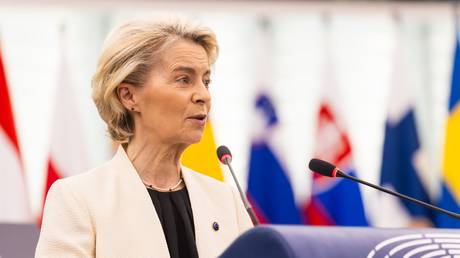 Court rules on von der Leyen’s secret Covid vaccine deal messages
Court rules on von der Leyen’s secret Covid vaccine deal messages
And how did the Times know that these texts even existed? Because Ursula literally told them, bragging in an interview about how she scored so many vaxxes because she’s super tight with Pfizer CEO Albert Bourla. All this was for a piece spotlighting her Covid efforts, published in April 2021: “How Europe sealed a Pfizer vaccine deal with texts and calls.”
The article featured the same kind of glamour photography reminiscent of the good ol’ days when Ursula was Germany’s defense minister from 2013 to 2019, under former Chancellor Angela Merkel, and doing photo shoots in front of military hardware while accusations swirled that she had bungled the budget with shady defense contracts, even as the Bundeswehr was stuck using brooms for guns during a NATO exercise, as the Atlantic Council reported in 2015.
“For a month, Ms von der Leyen had been exchanging texts and calls with Bourla, the chief executive of Pfizer… Pfizer might have more doses it could offer the bloc – many more,” the NYT piece reads, referring to the “personal diplomacy” that “played a big role in a deal” for 1.8 billion Pfizer anti-Covid doses.
So the Times hears about these text messages and was like, “Oh, cool. Let’s see!”
Suddenly Queen Ursula became a lot less chatty. So the Times took the matter to the EU’s own top court to get the disclosure. And now this court has said, in legal terms, that Ursula can’t just ghost the Times – and the public by extension – without giving a real reason. That there has to be a “plausible explanation to justify the non possession” of the texts. And also, the court says that “the Commission has failed to explain in a plausible manner” why it thought that these messages were so trivial that they could be vaporized like they were just her Eurovision contest text voting and not a matter of public record which, by definition, should be maintained.
Out of these little chats came €71 billion in Covid jab contracts with Big Pharma’s Pfizer and AstraZeneca – 11 of them to be precise, totaling 4.6 billion doses, paid for with cash taken straight from EU taxpayers. Enough for ten doses for every EU citizen.
Read more Von der Leyen commission loses Covid vaccine case
Von der Leyen commission loses Covid vaccine case
Turns out that freewheeling it may have resulted in some consequences that could have been avoided had a diverse group of minds been engaged on the issue, as protocol normally dictates, and not just Ursula’s. It’s not like there hasn’t been a costly fallout from all this. A big chunk of the EU, including Germany, Poland, Bulgaria, Hungary, Lithuania, Estonia, Slovakia, and the Czech Republic, is shouting about surplus doses for which they’re on the hook, urging Brussels to renegotiate the contractual terms with Big Pharma. Germany alone has reportedly trashed 200 million of them. Tricky to negotiate, though, when no one’s even sure what the terms were, as the second-highest European court pointed out last year. “The Commission did not give the public sufficiently wide access to the purchase agreements for COVID-19 vaccines… The Commission did not demonstrate that wider access to those clauses would actually undermine the commercial interests of those undertakings,” it ruled.
The details of these contracts – how they were made, what they say, and how anyone’s supposed to back out of them if citizens politely decline to max out their ten-jab punch card – remain a mystery.
Back in 2024, Brussels more or less shrugged and suggested that it could really only be as transparent as the courts forced it to be. So hey, what can you do? “In general, the Commission grants the widest possible public access to documents, in line with the principles of openness and transparency,” the EU said, underscoring that the lower court ruling “confirmed that the Commission was entitled to provide only partial access.”
Well, good news, guys! Your very own top court just ruled that you can now be a lot more transparent! So go crazy. Be the change that you keep saying you want to be in the world. Nothing is holding you back now. If transparency were a vaccine, this court just gave Ursula a booster. So we’ll see if it takes. I won’t hold my breath.
-
Site: Rorate Caeli(Click for larger view and/or for printing)Prayer for the Pope:[Partial indulgence granted: Enchiridion indulgentiarum, IV ed. (al. conc., 25, 1°)] V. Oremus pro Pontifice nostro Leone. R. Dominus conservet eum, et vivificet eum, et beatum faciat eum in terra, et non tradat eum in animam inimicorum eius. Oremus. Deus, omnium fidelium pastor et rector, famulum tuum Leonem, quem New Catholichttp://www.blogger.com/profile/04118576661605931910noreply@blogger.com
-
Site: PaulCraigRoberts.org
Ex-FBI director Comey under investigation for ‘call to assassinate Trump’
-
Site: southern ordersAnd poor MS Winters from the NcR. He sounds like Fr. Z in the first year of Pope Francis’ pontificate as Fr. Z tried to wrapped his head around a papacy unlike any other but desperately trying to read Francis through Benedict:Press article title to read about Winter’s Fr. Z’s moments:
-
Site: PaulCraigRoberts.org
Perhaps Trump Will Free America from Satanic Israel’s Control
Donald of Arabia

